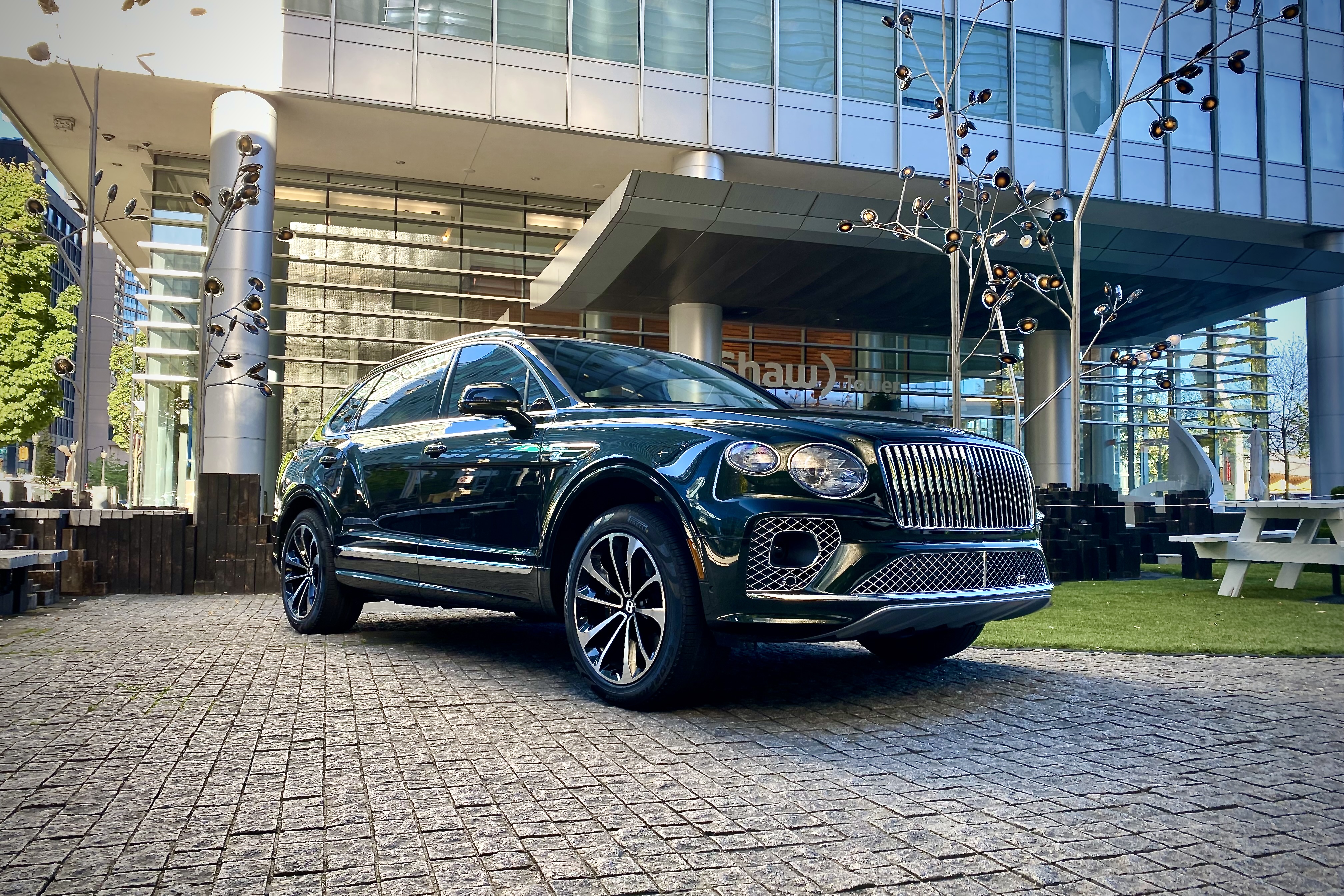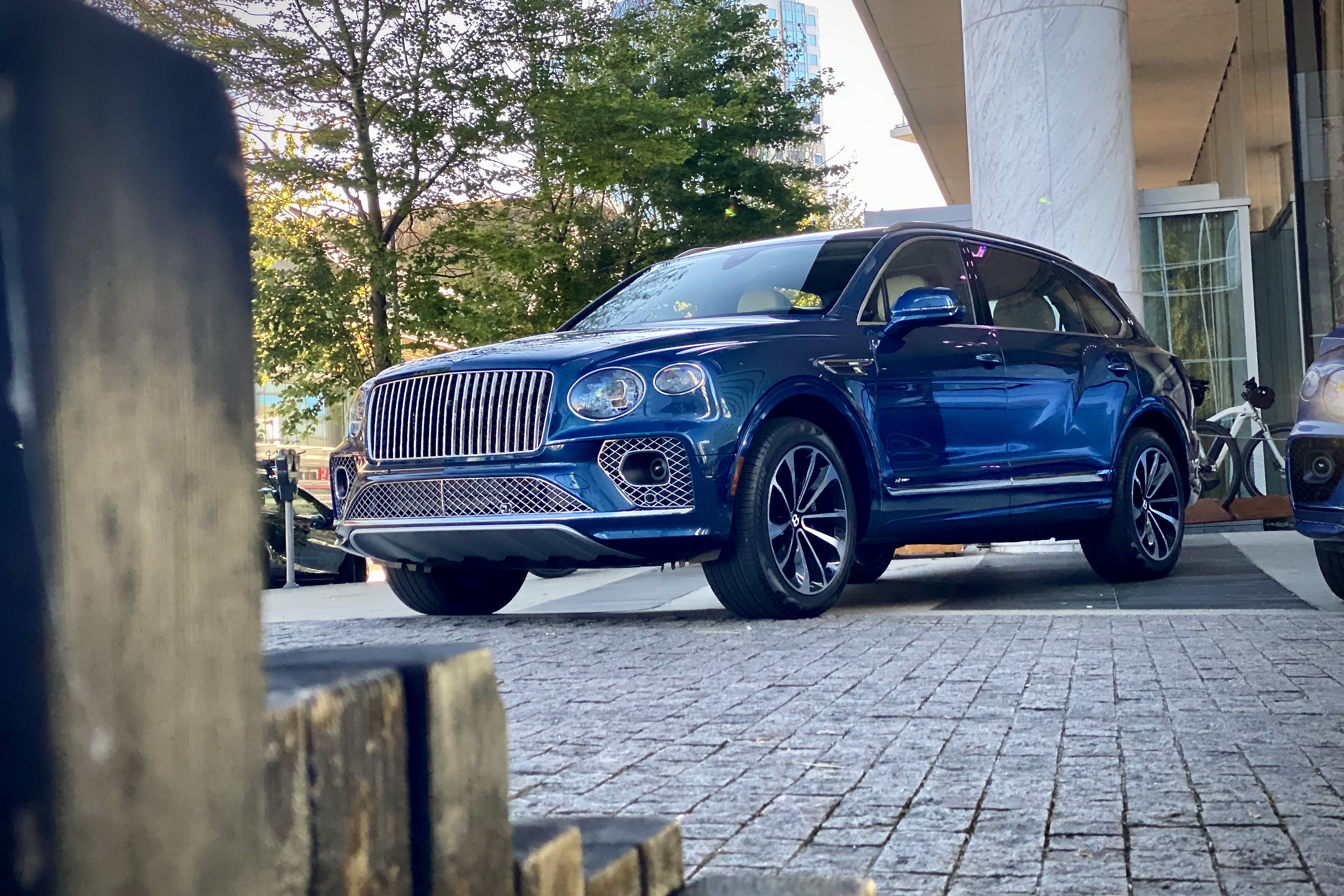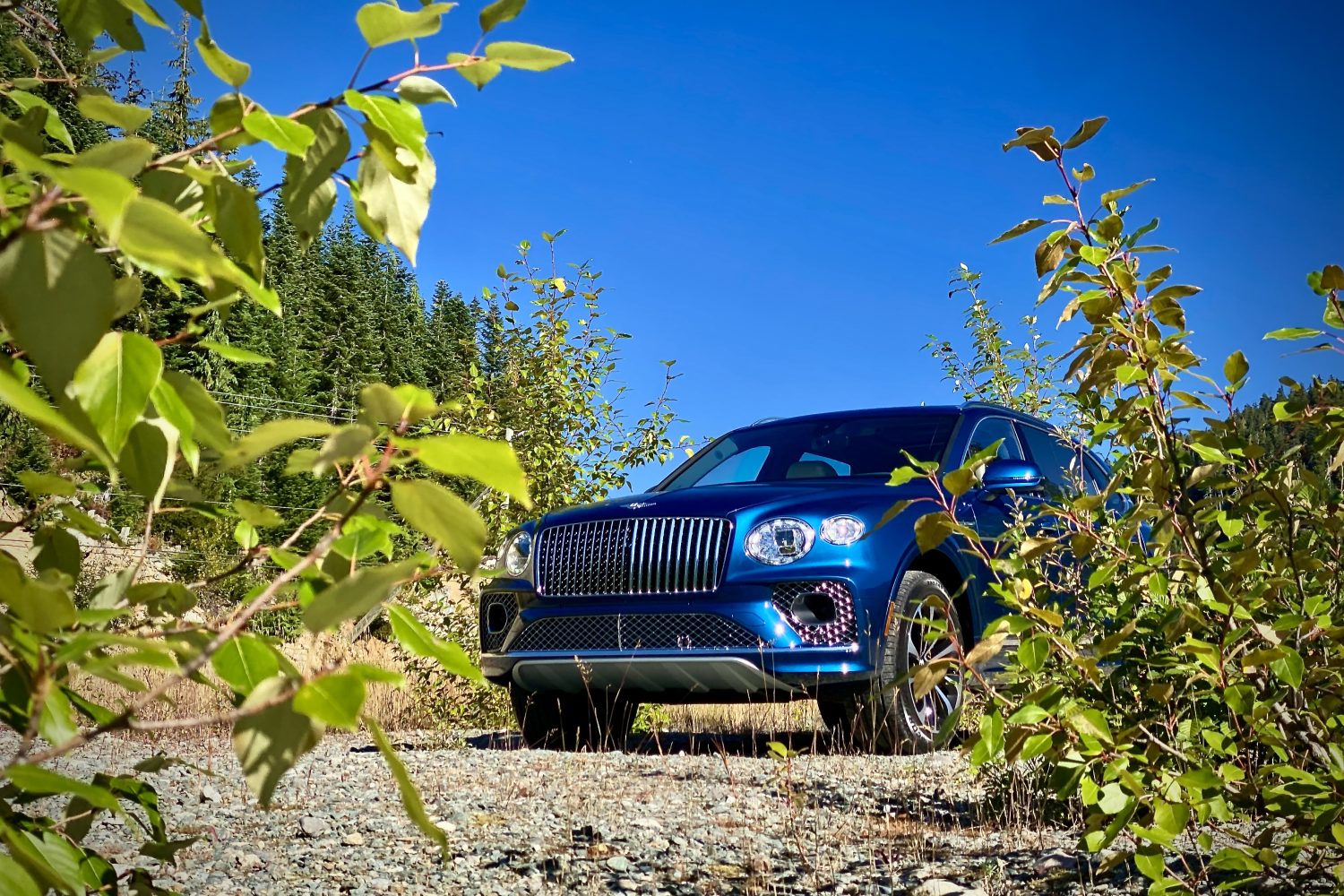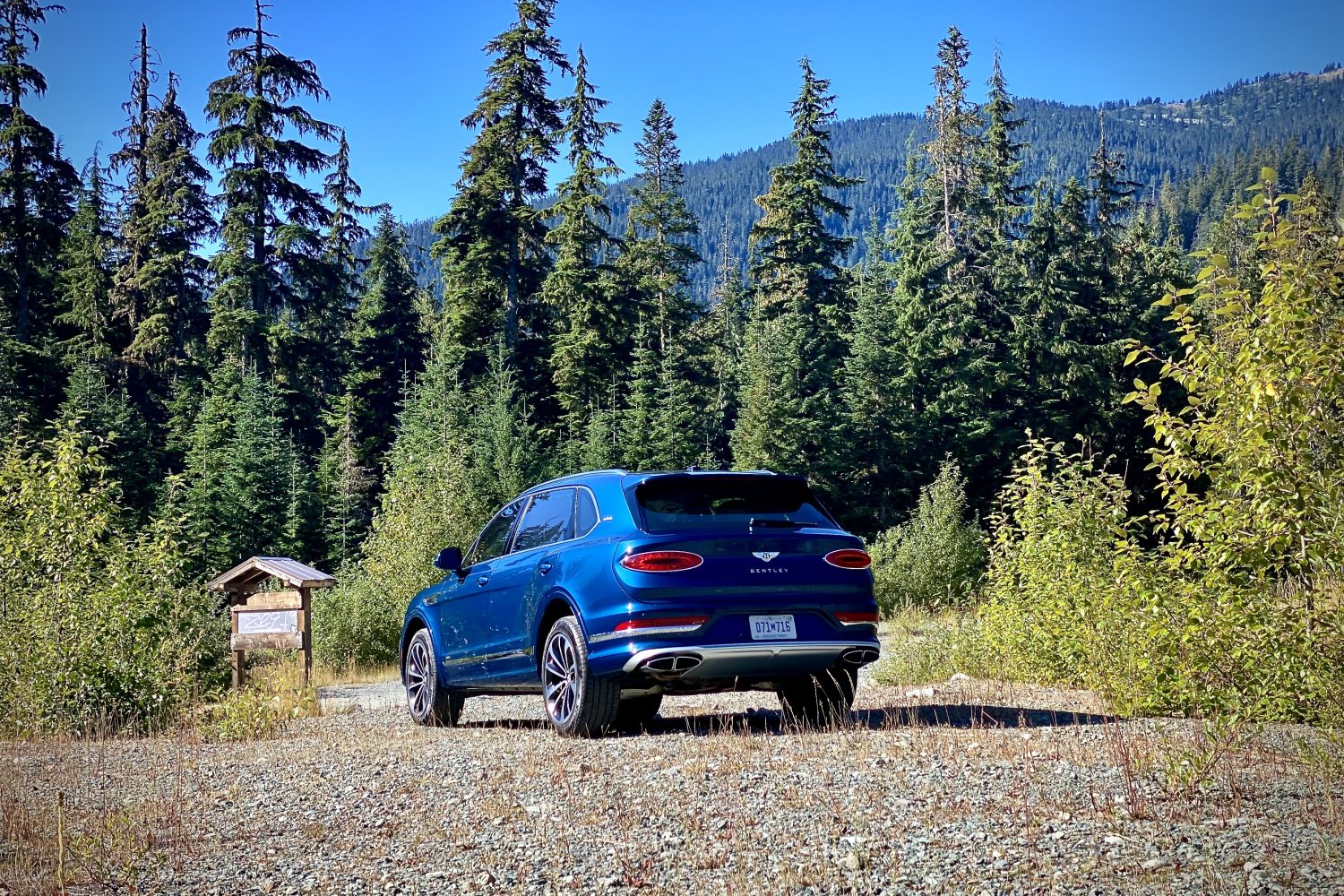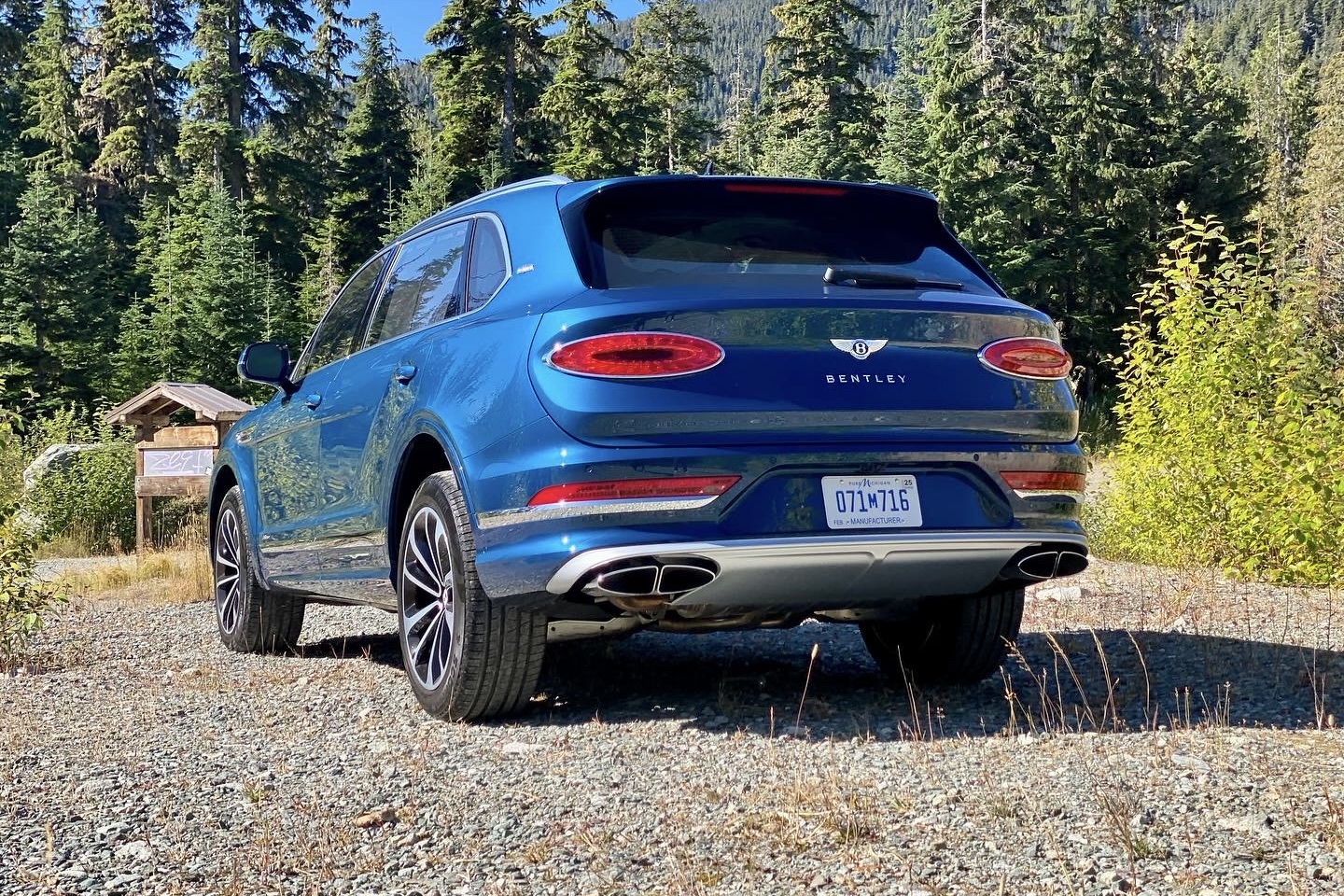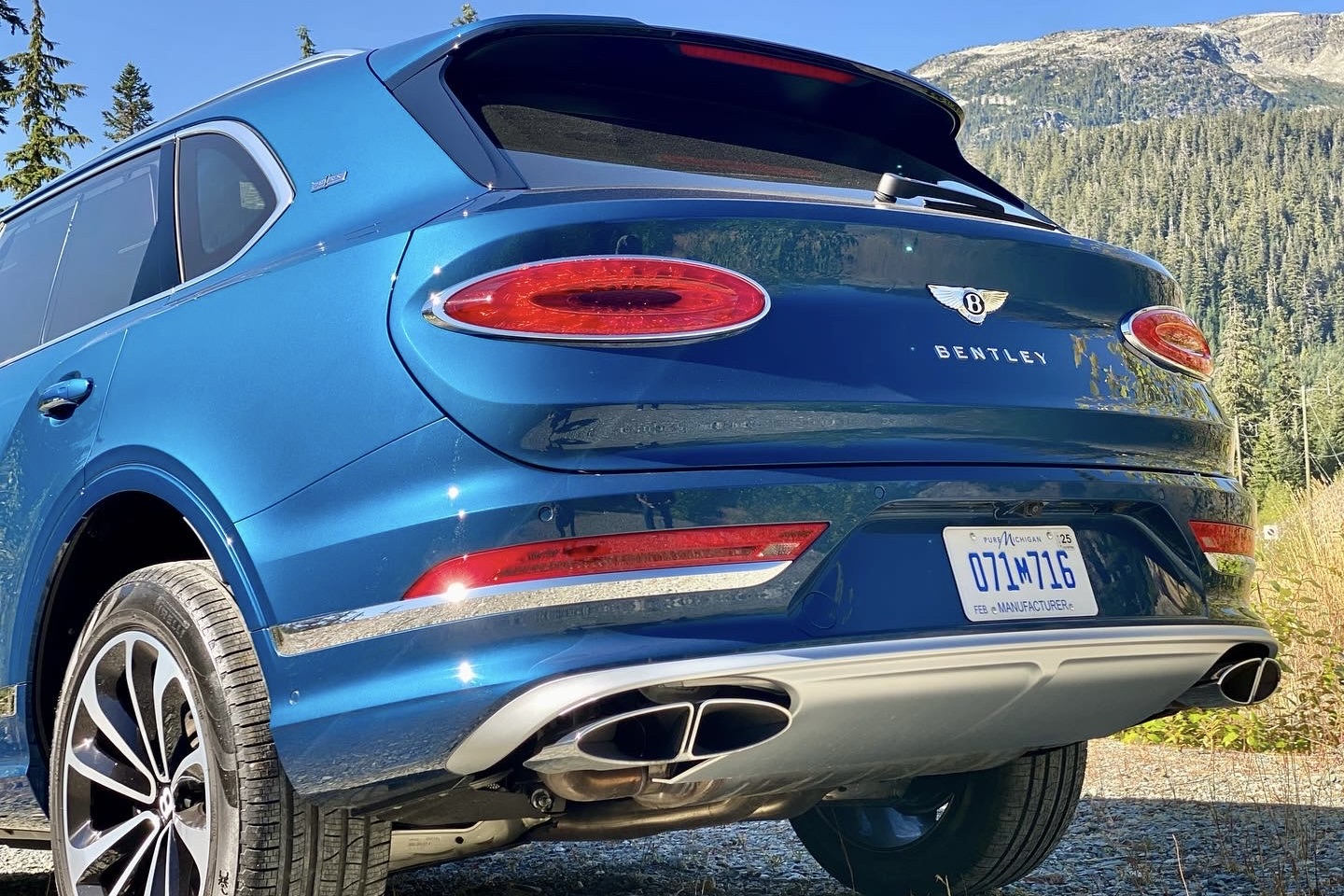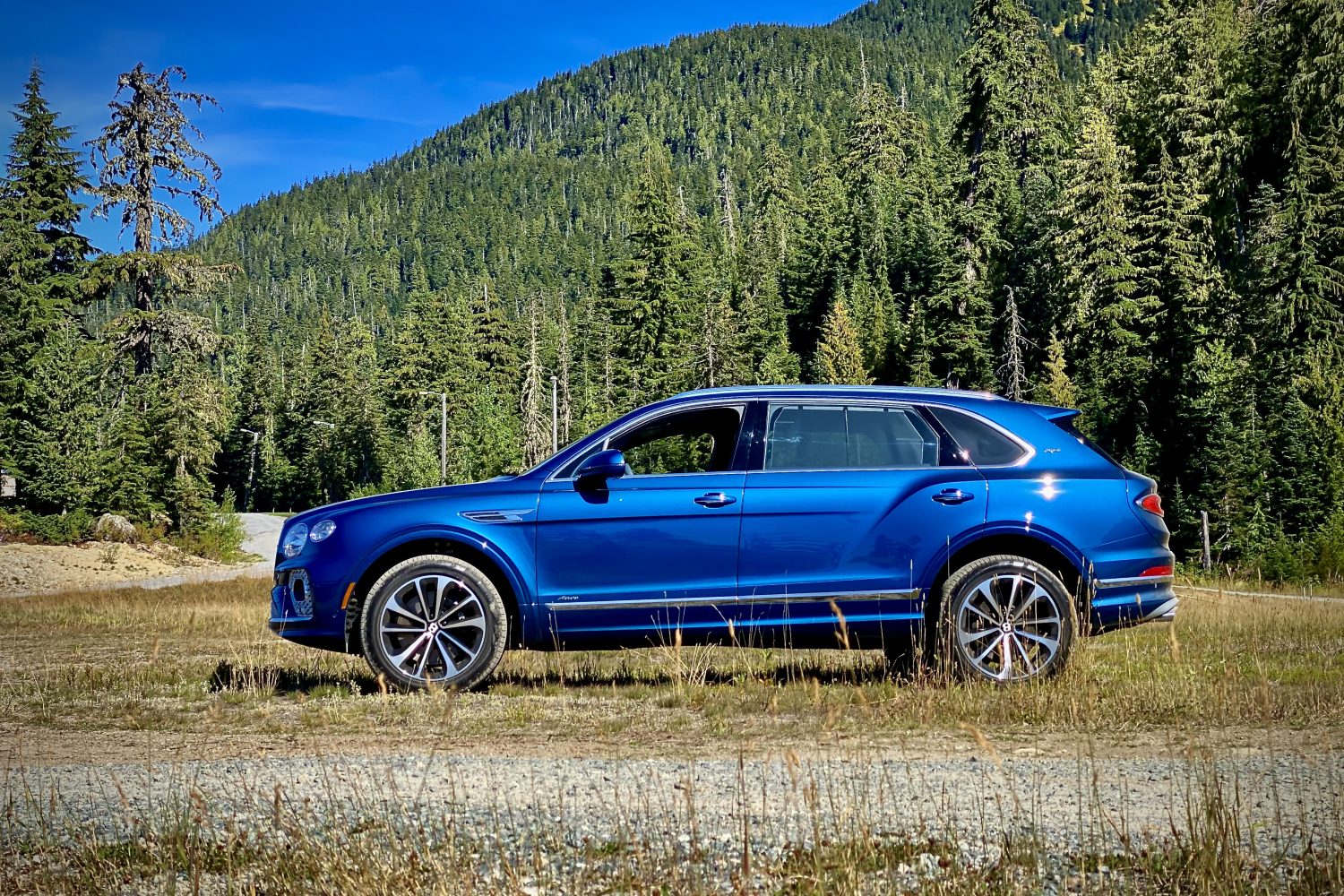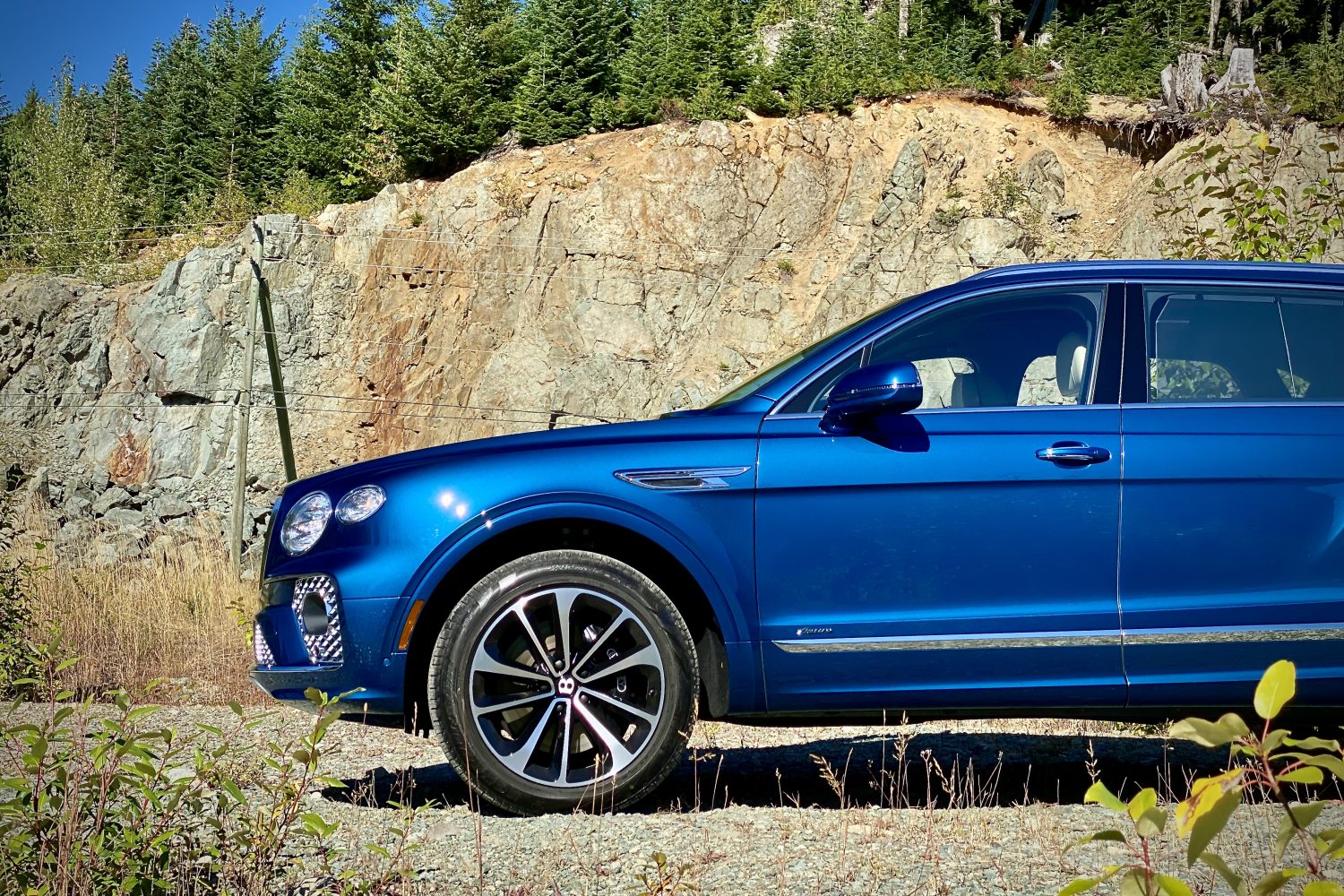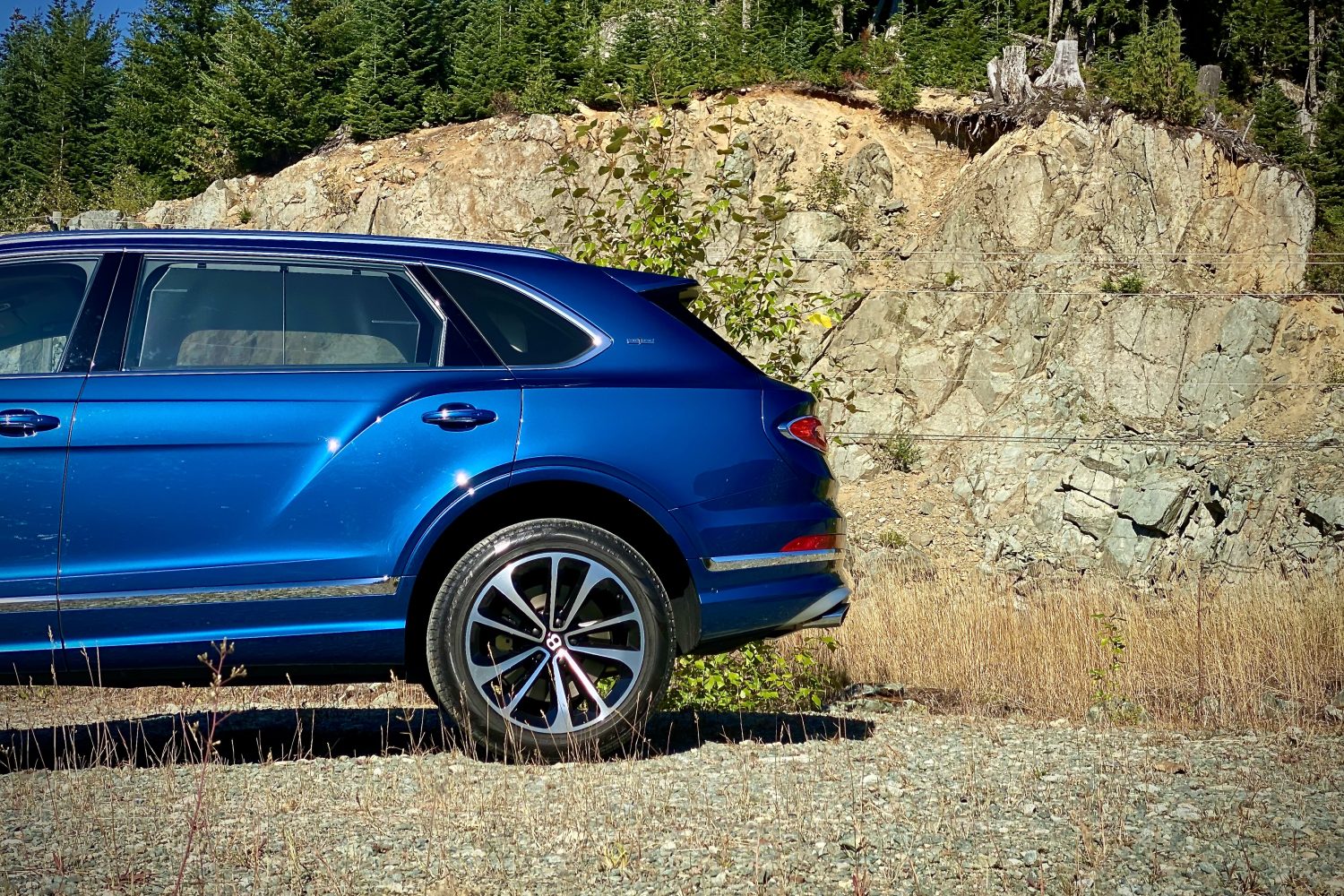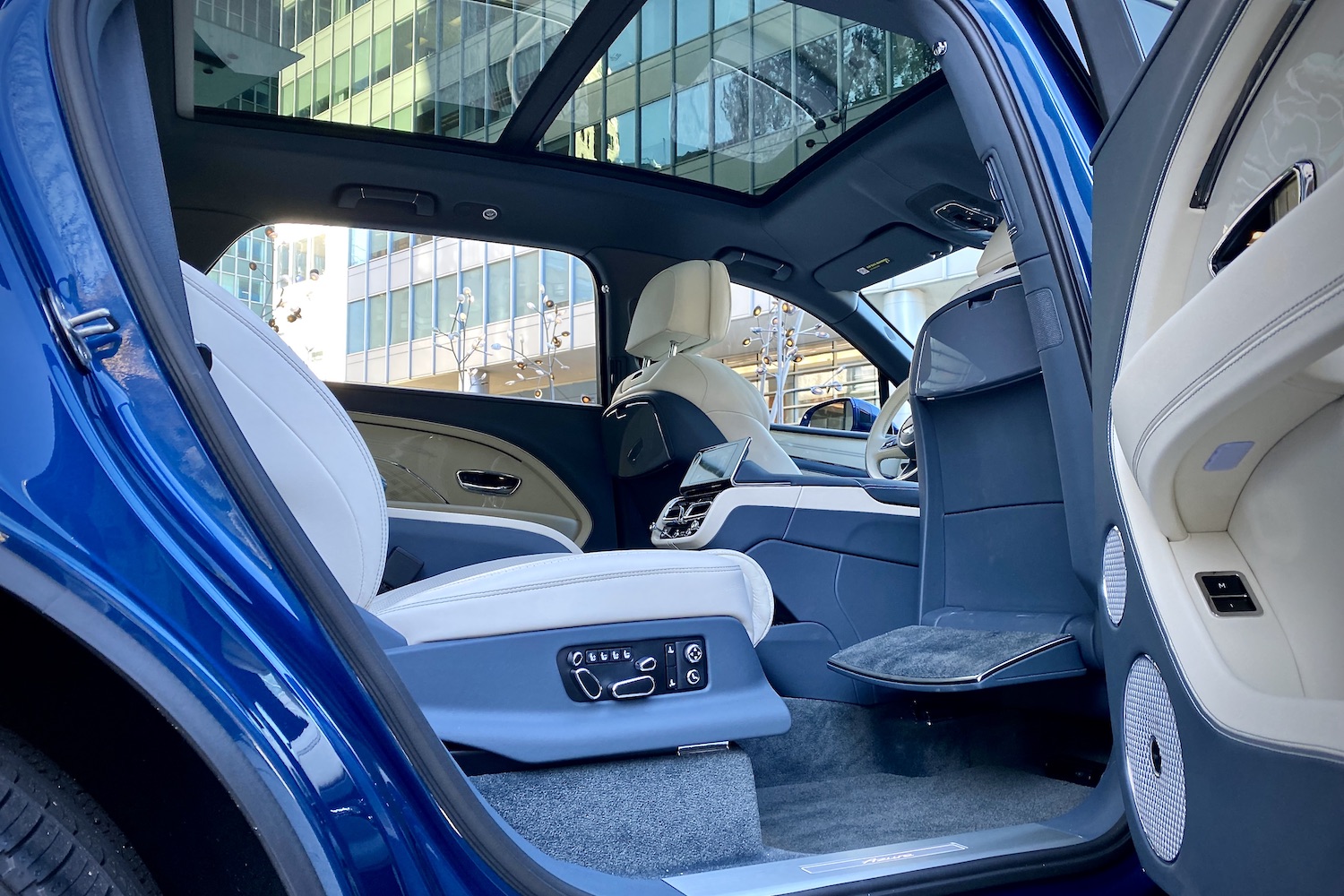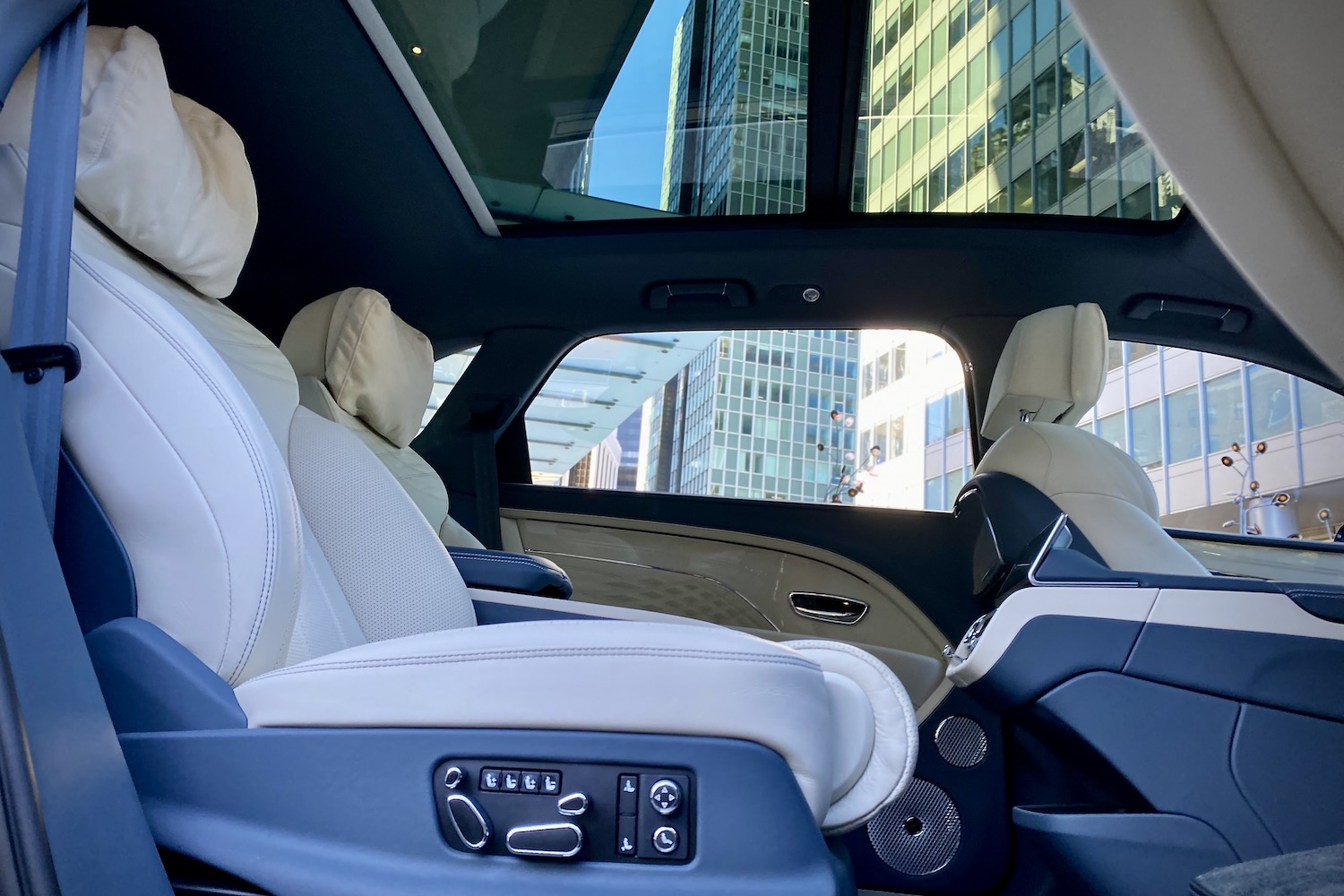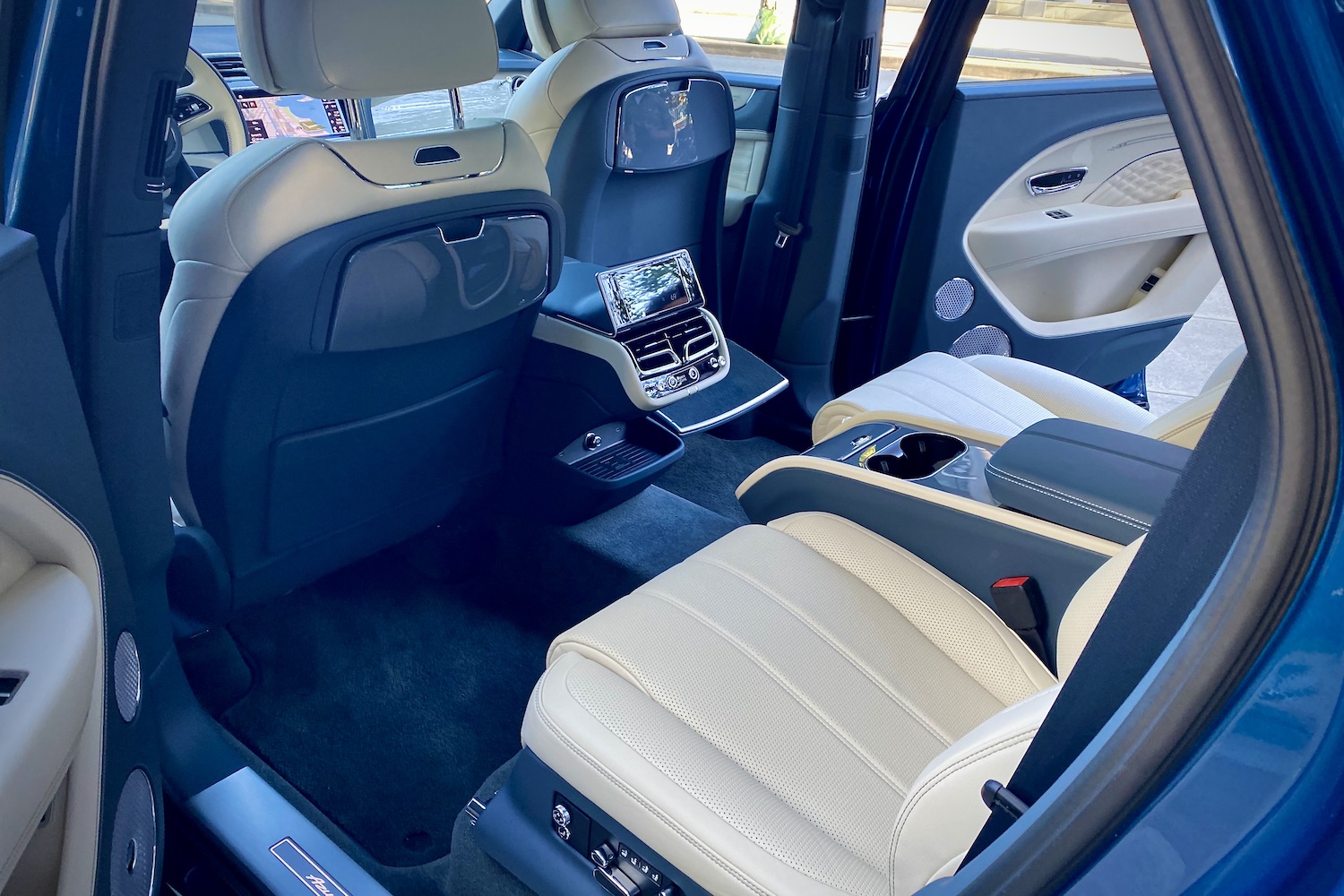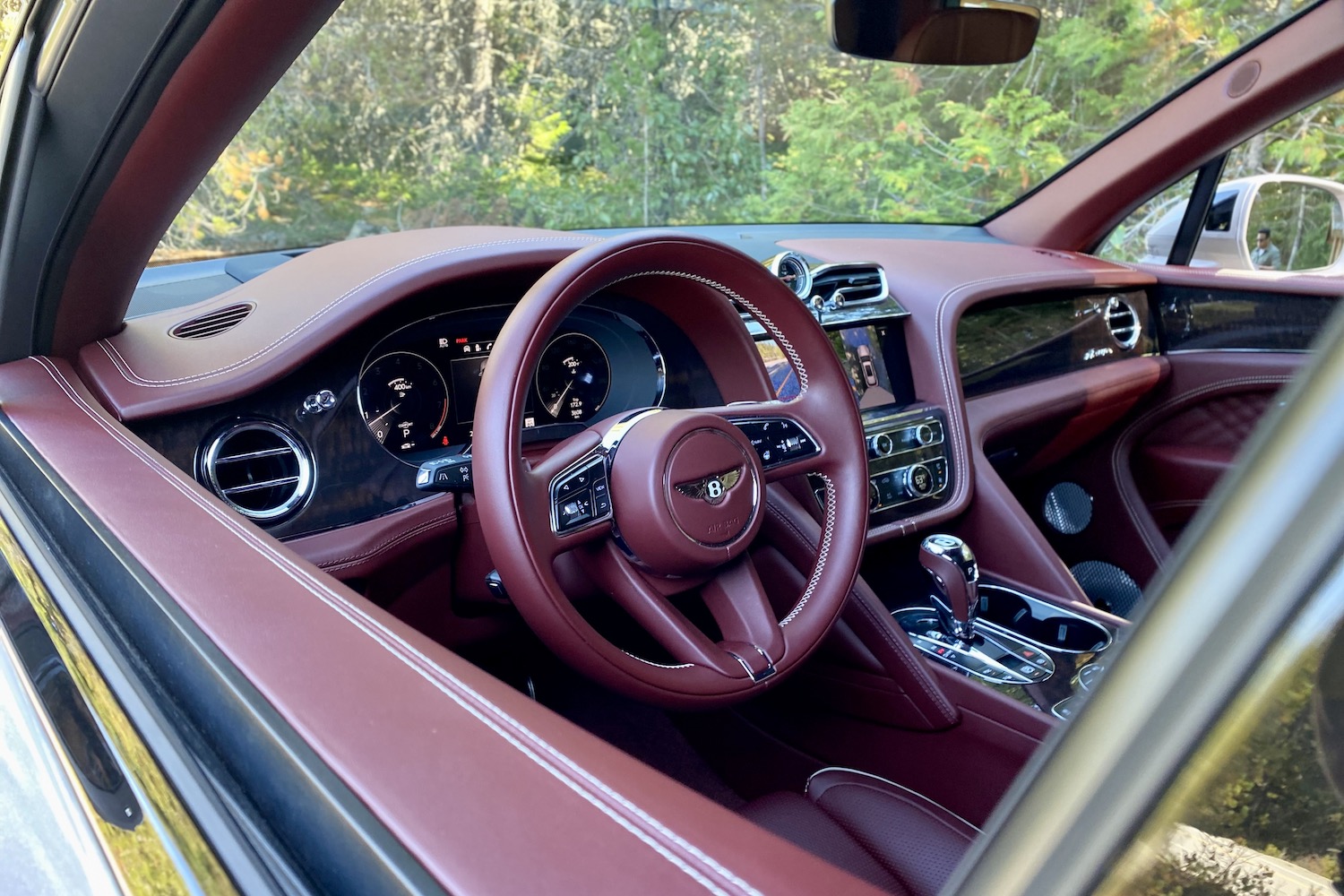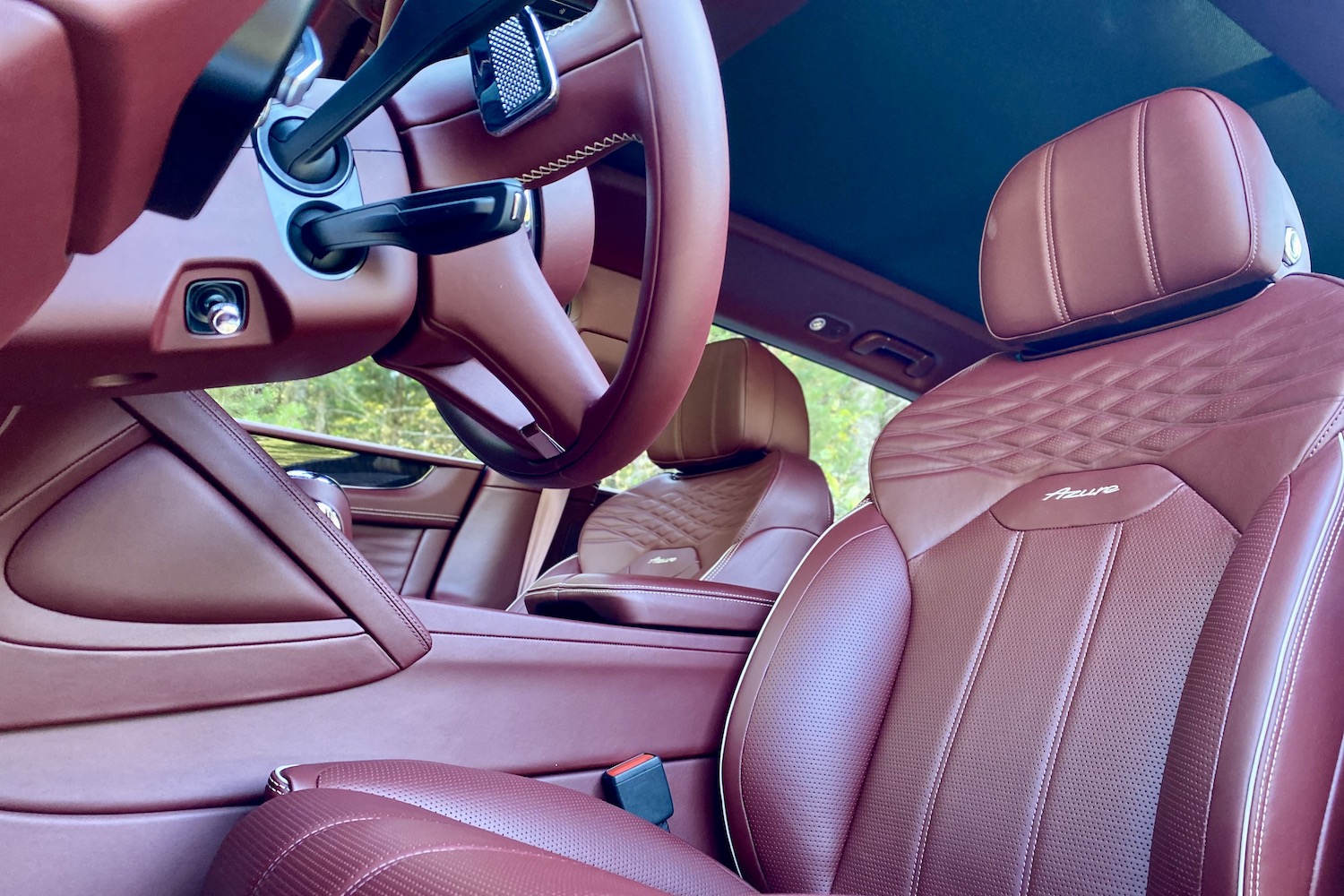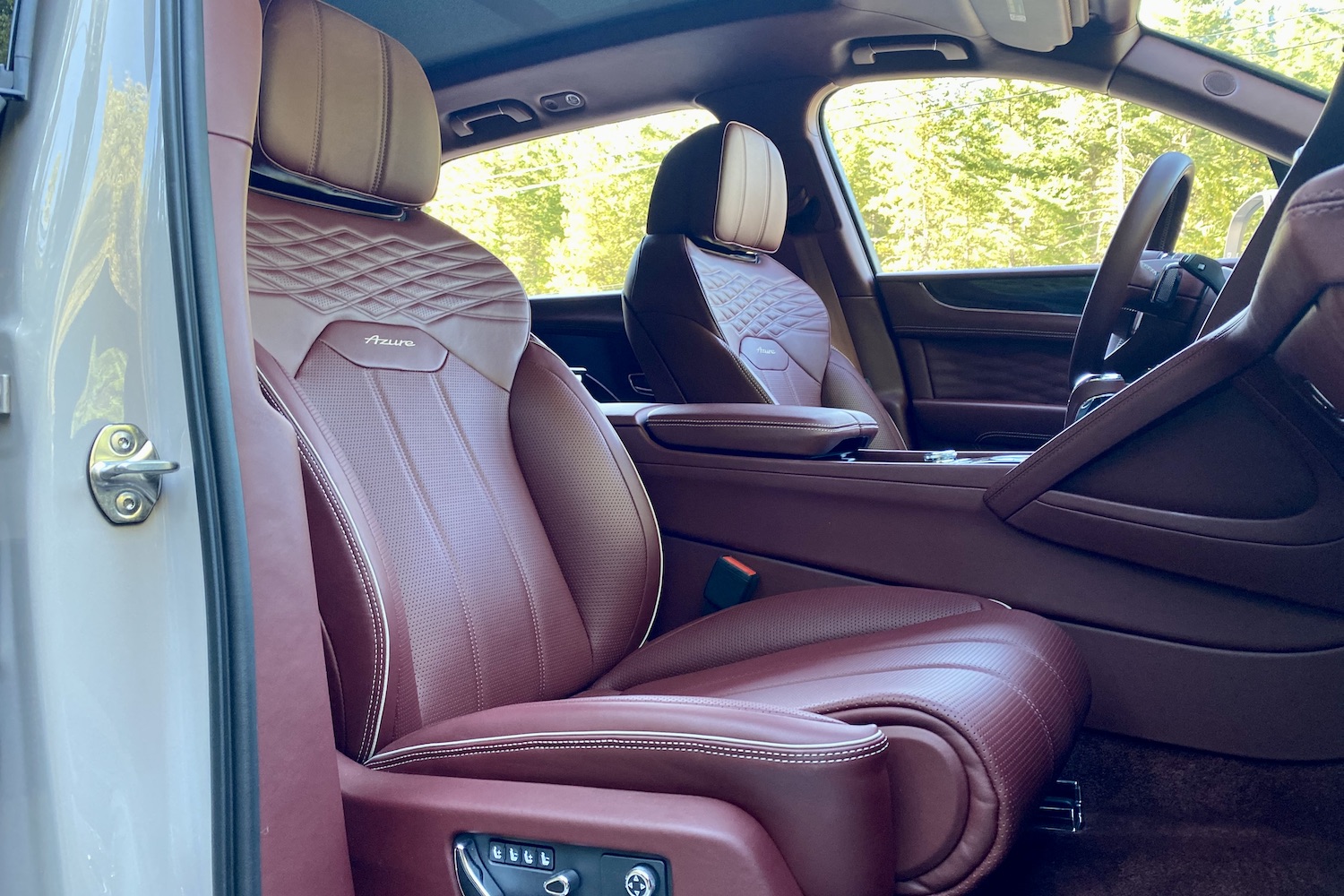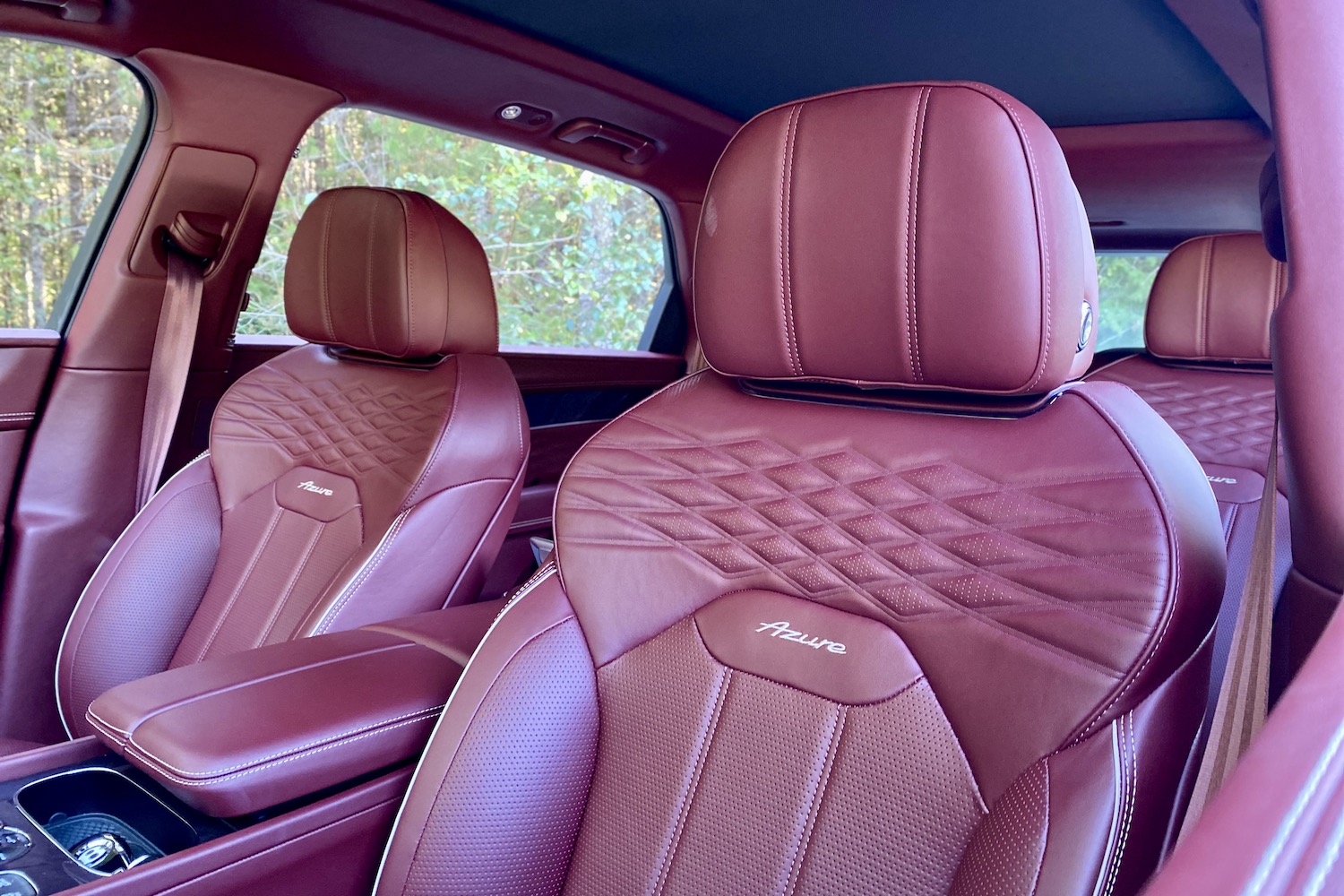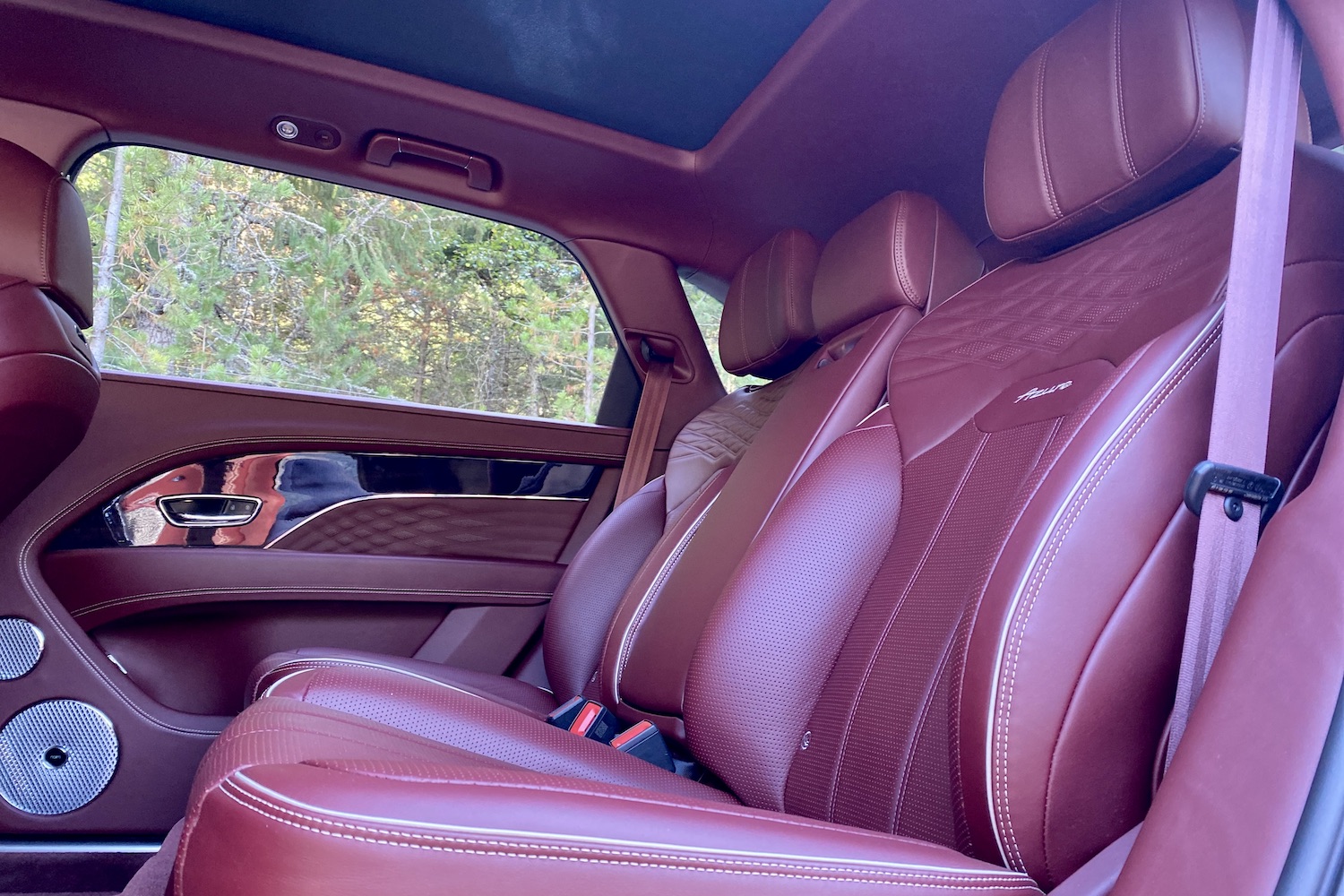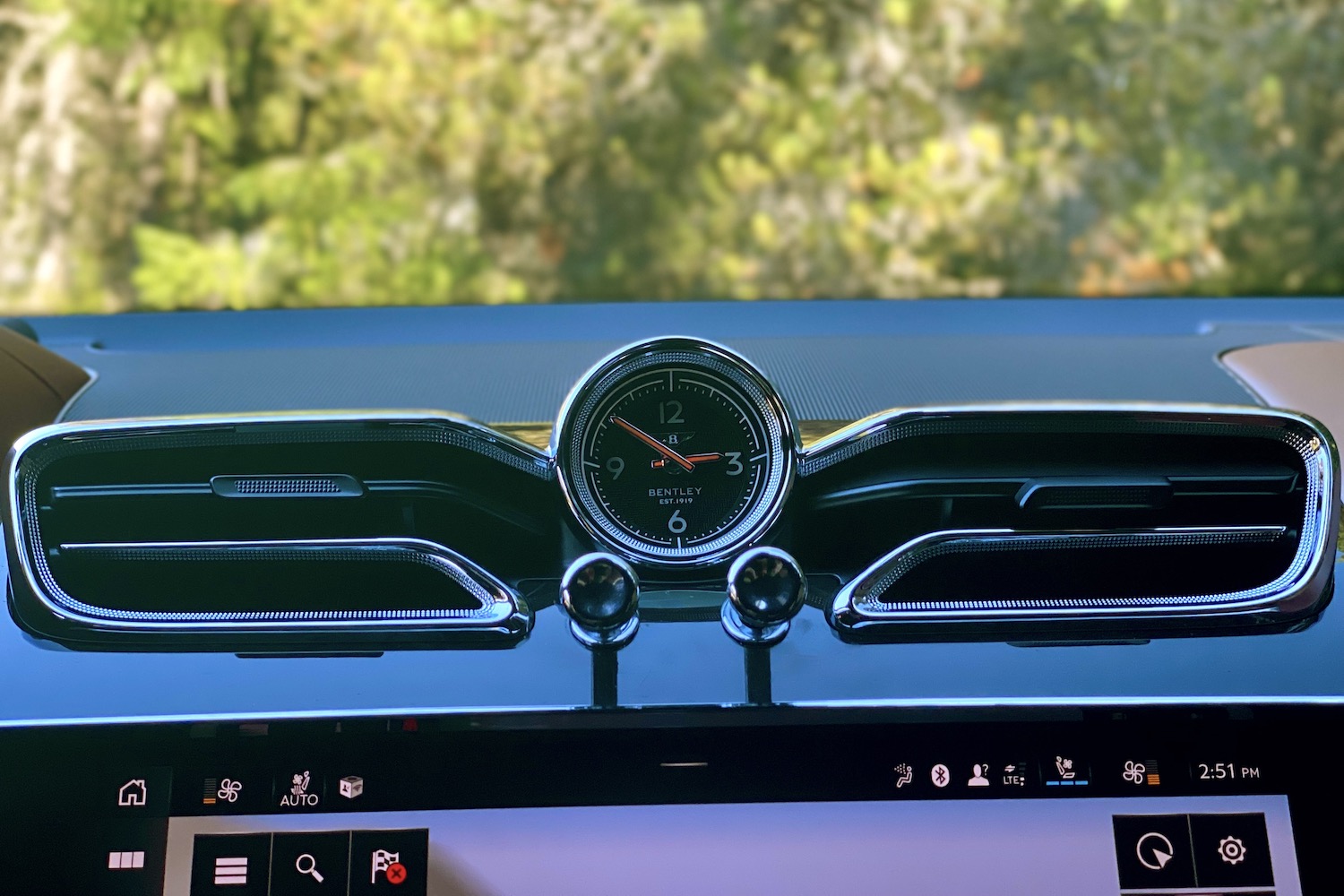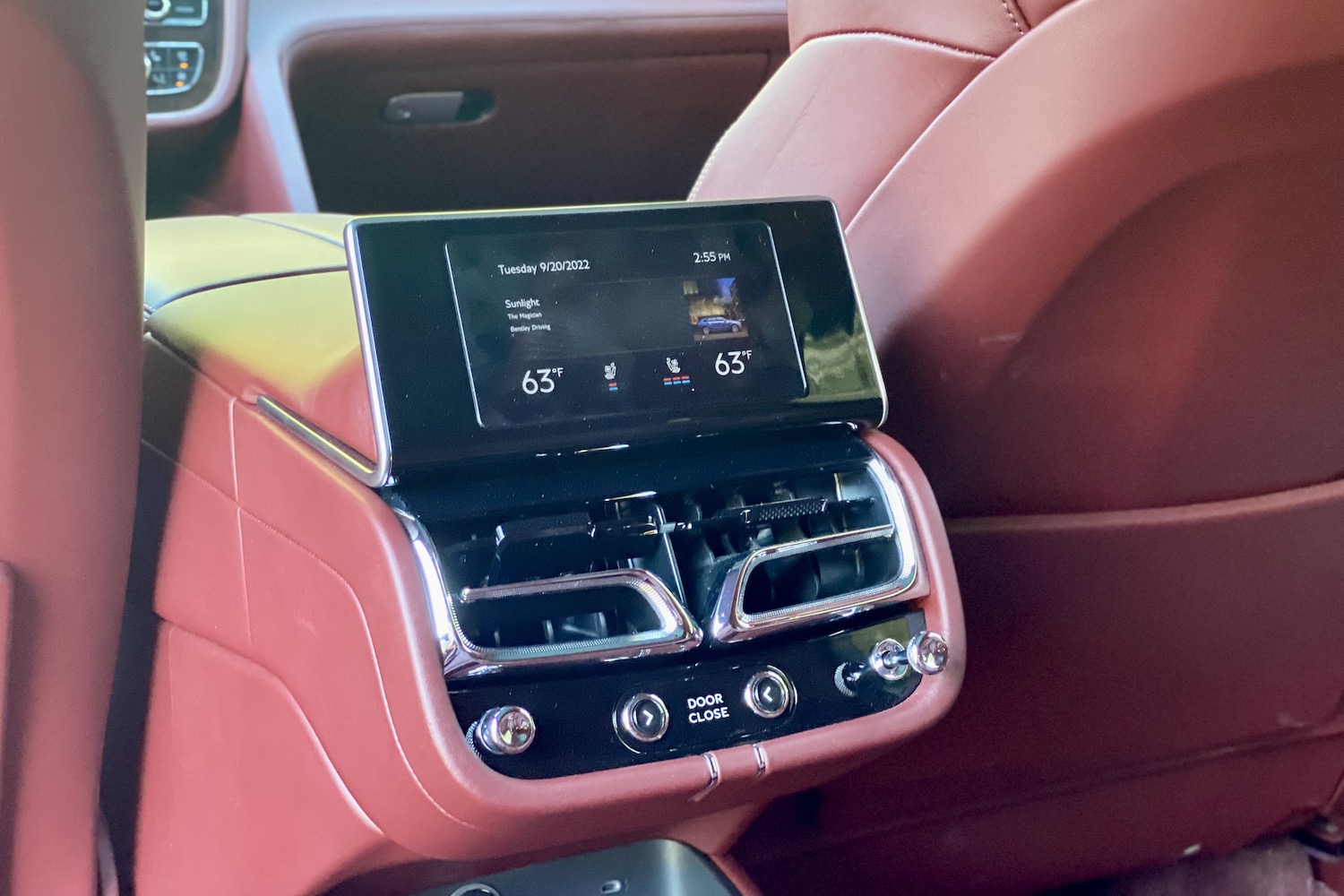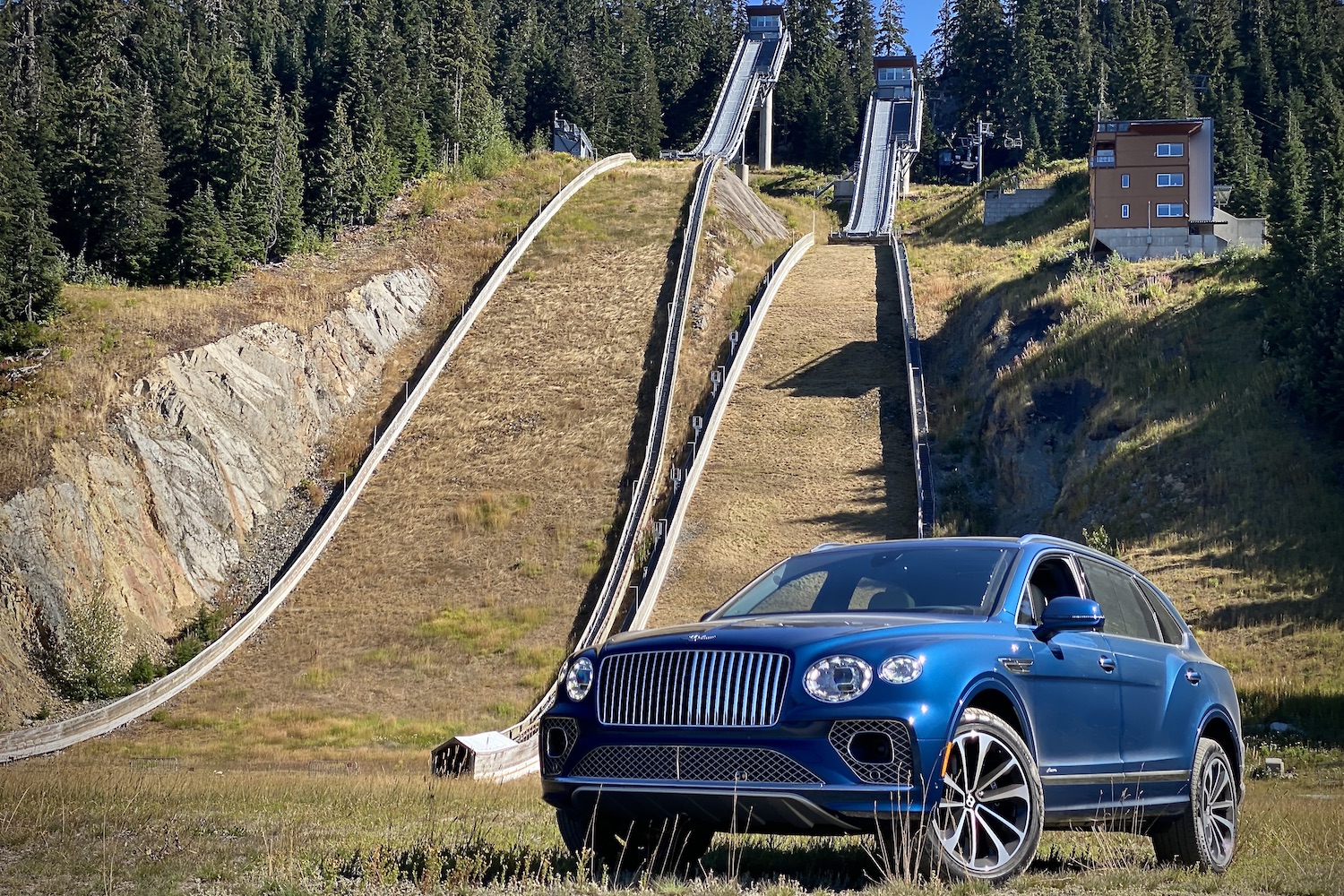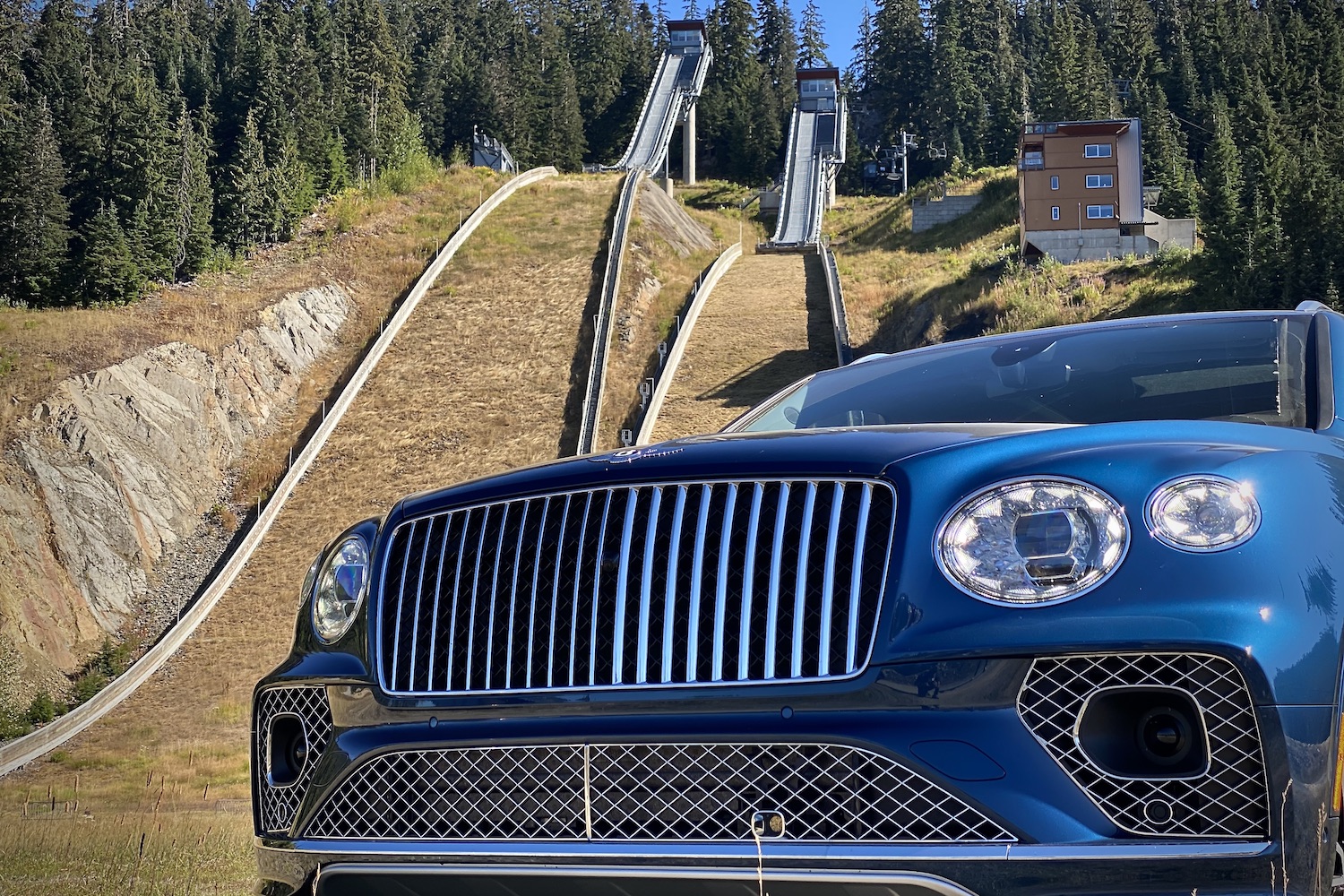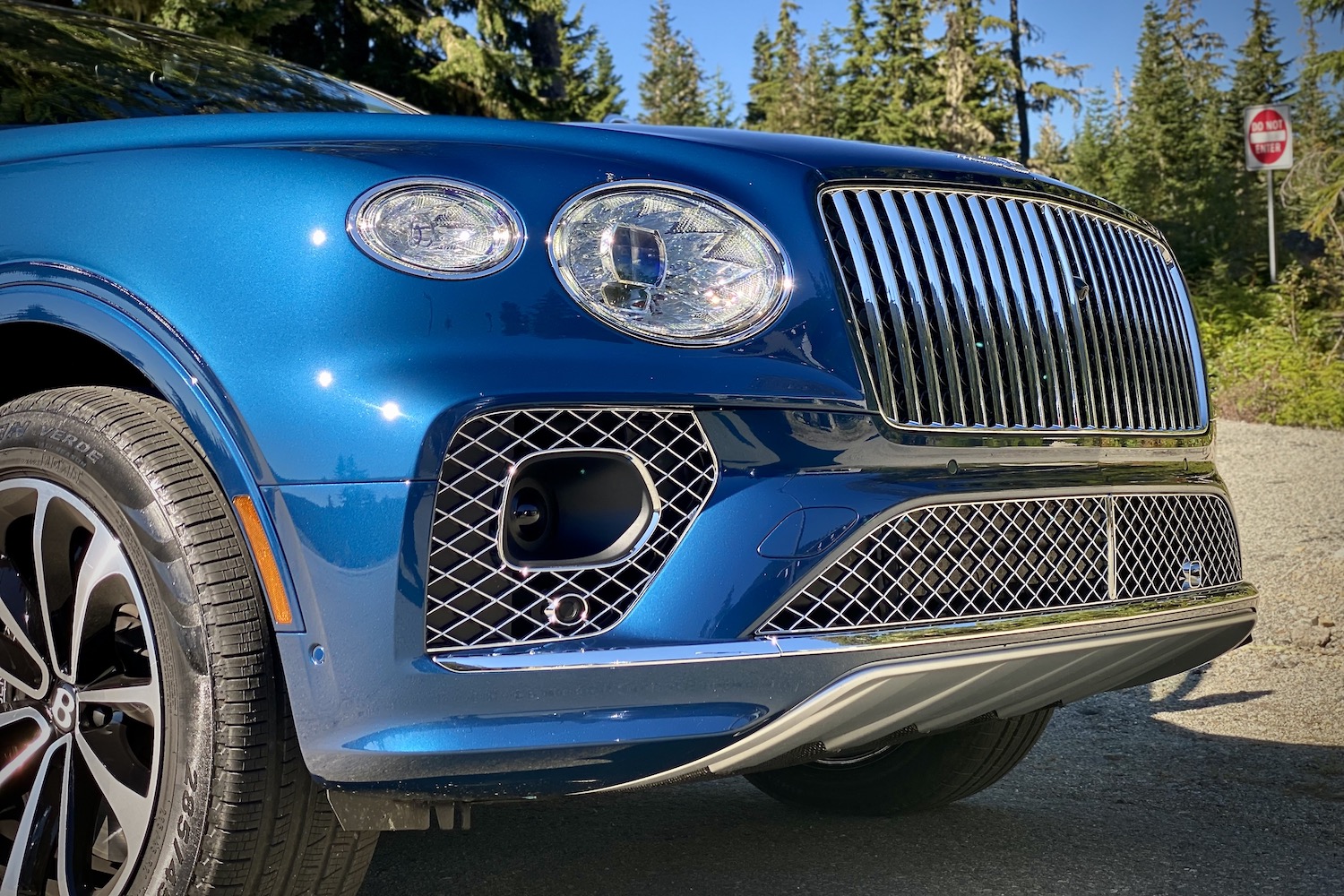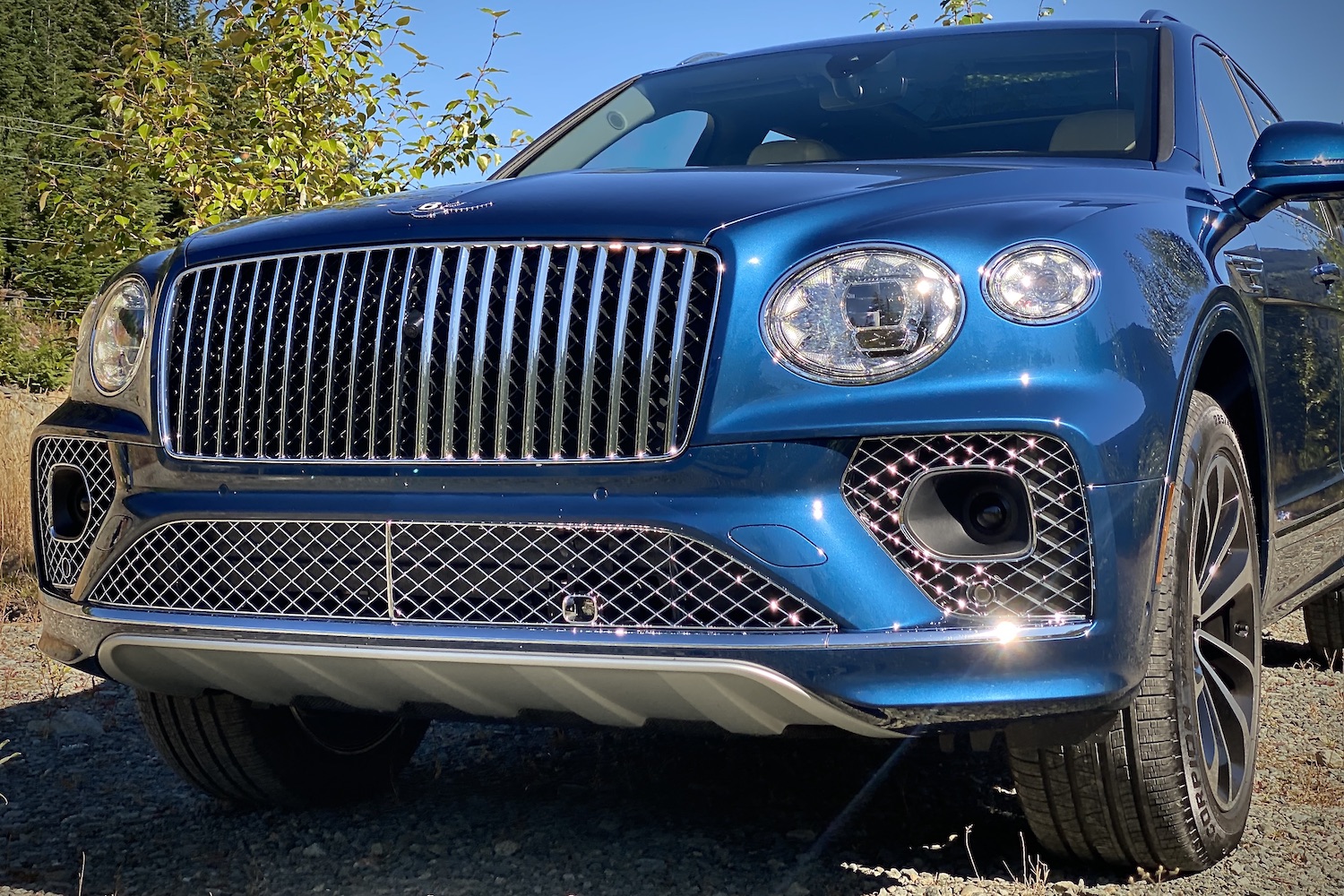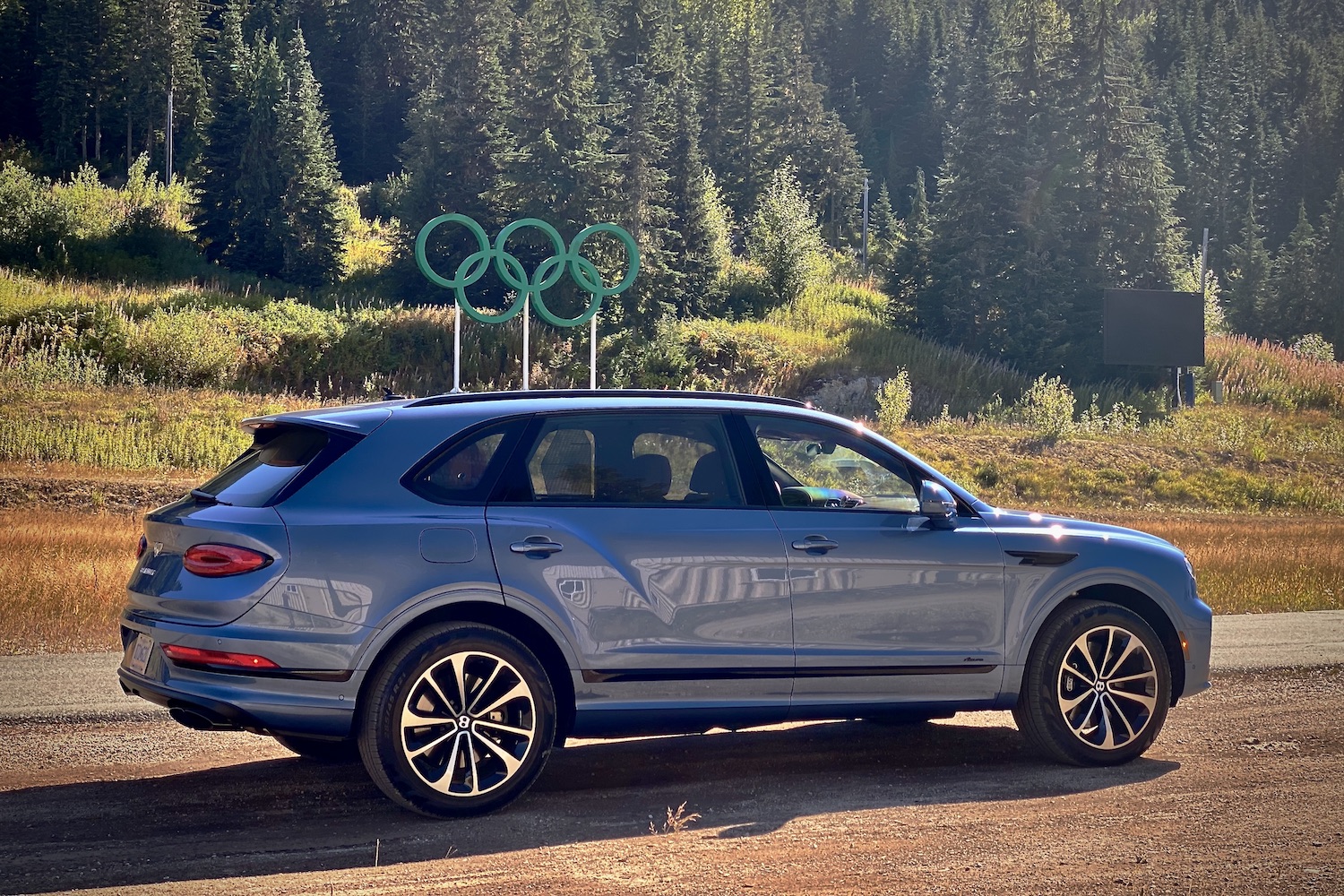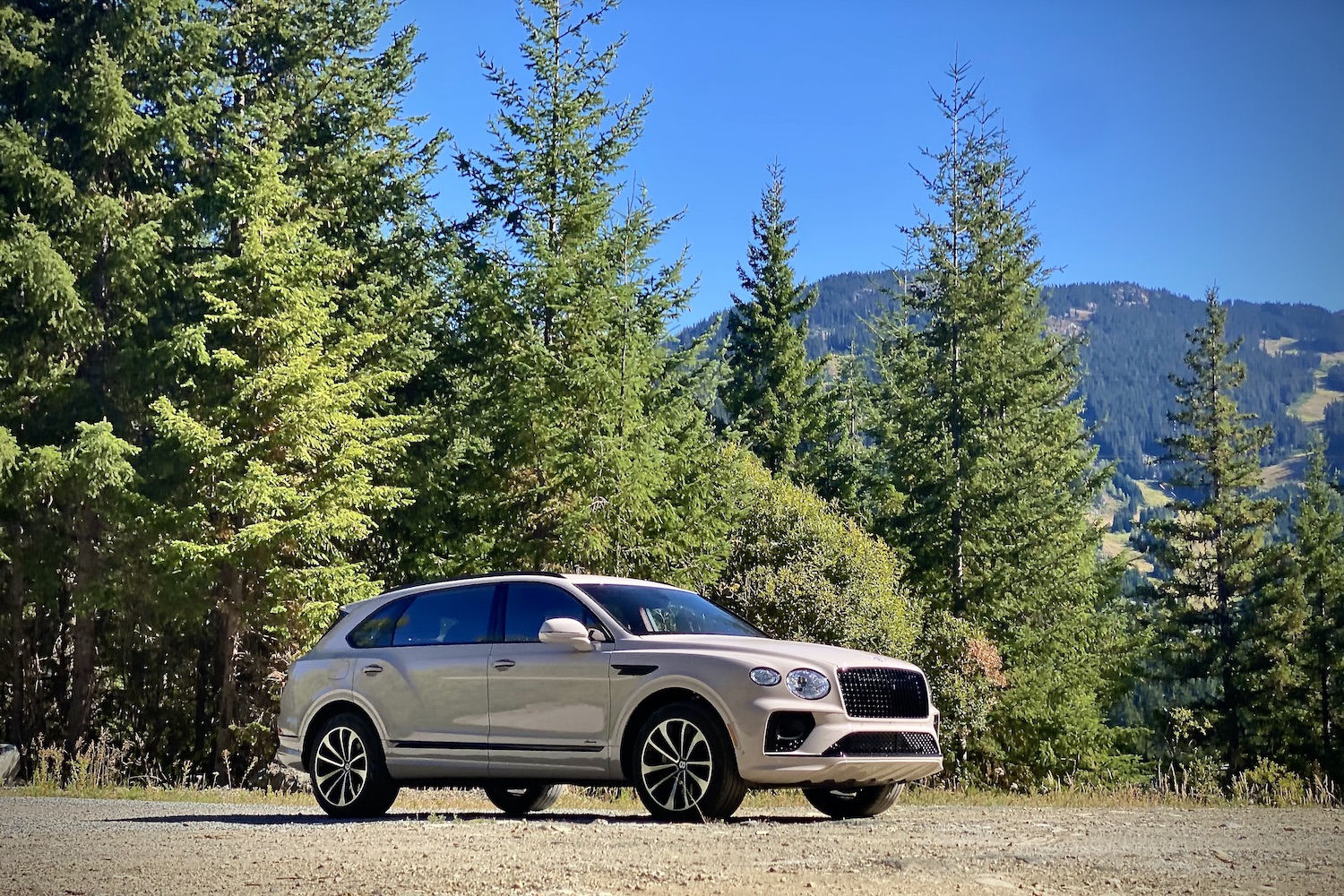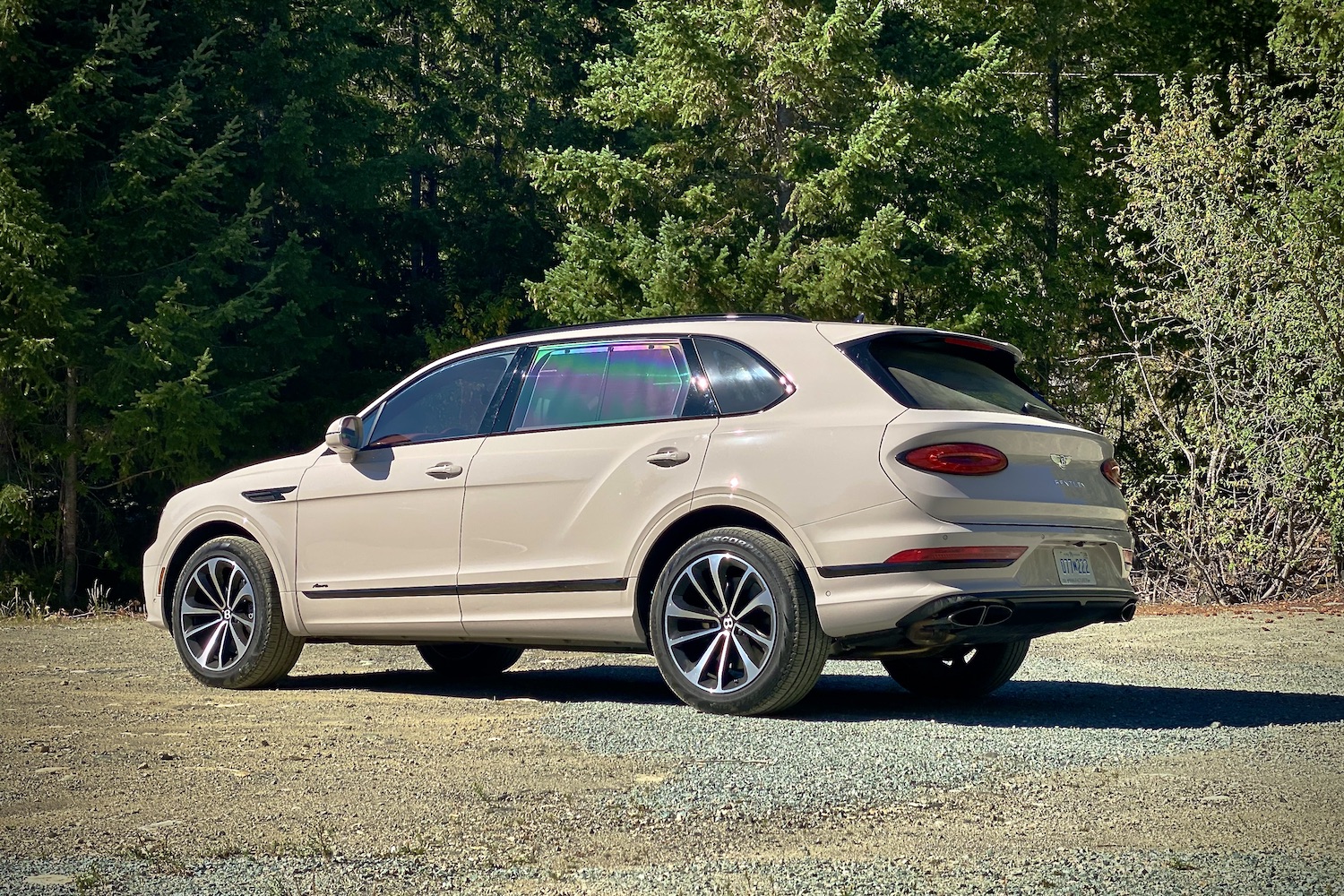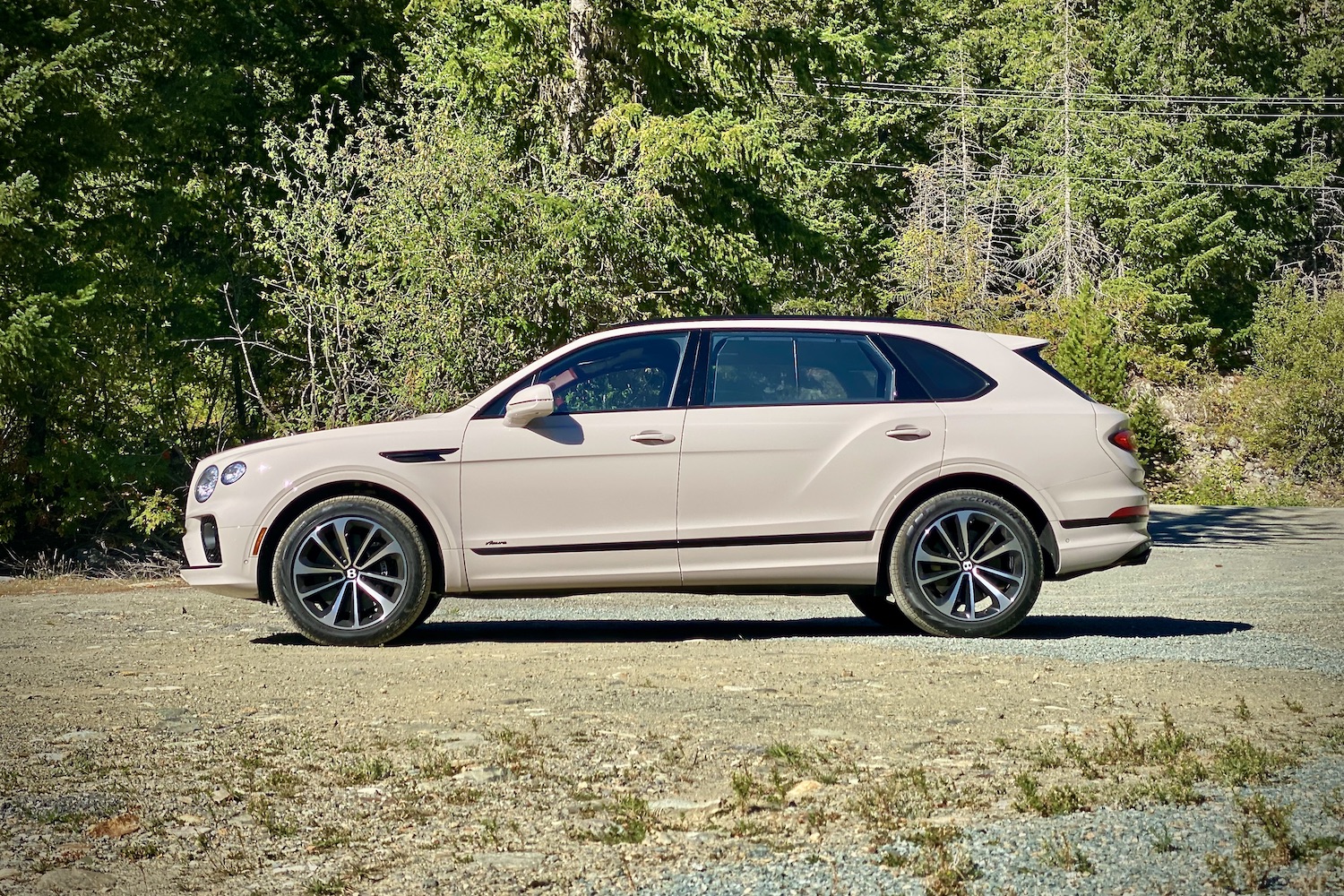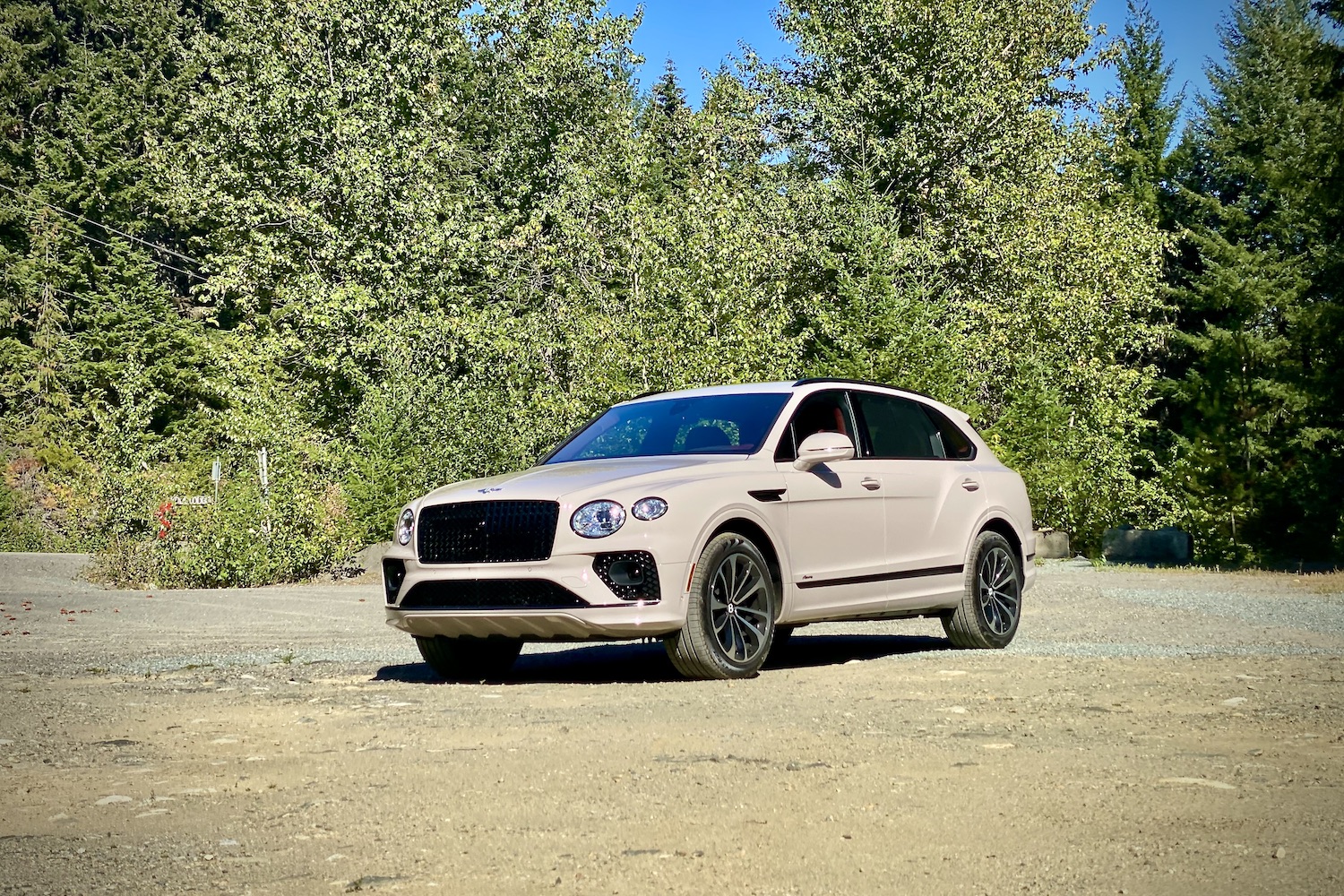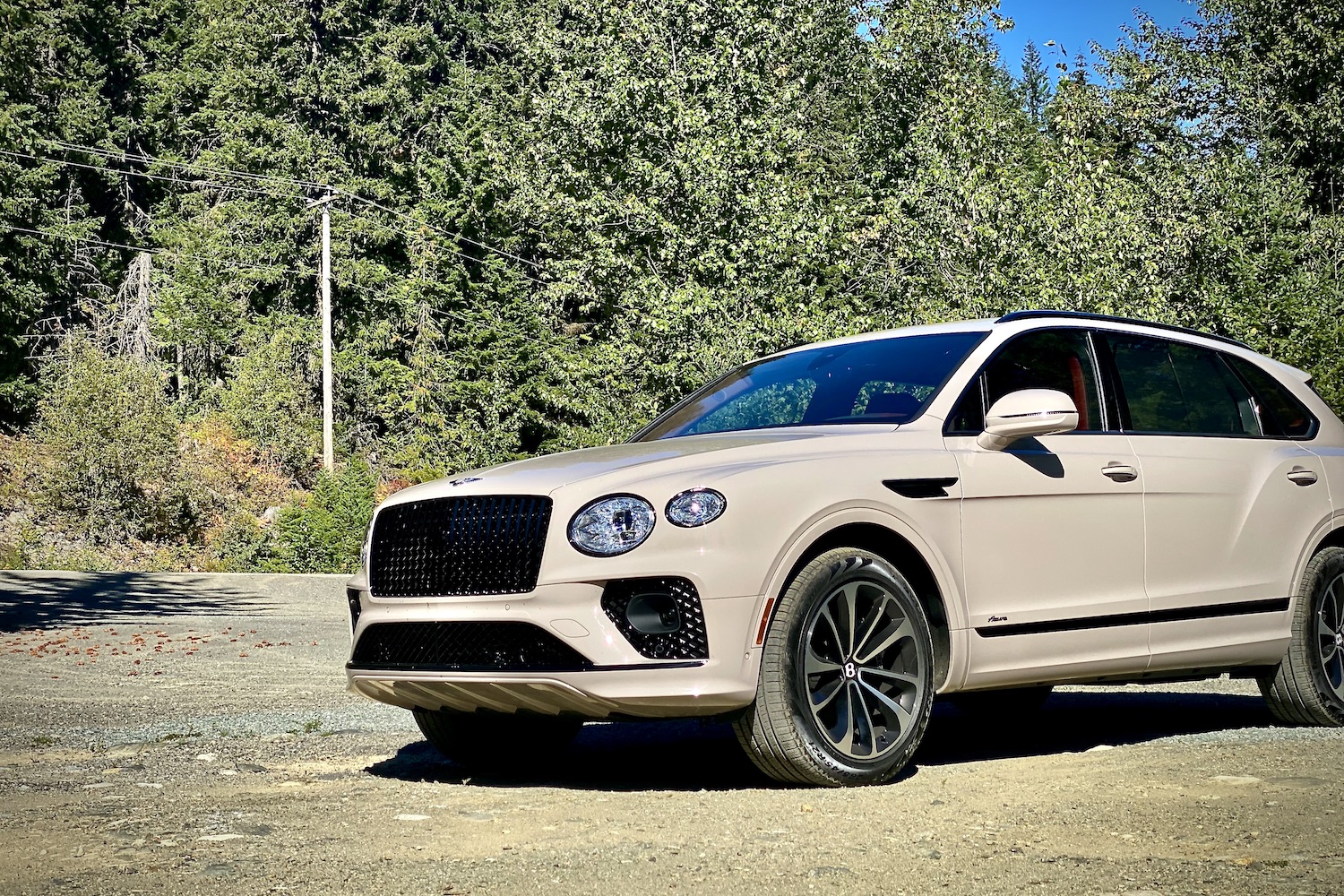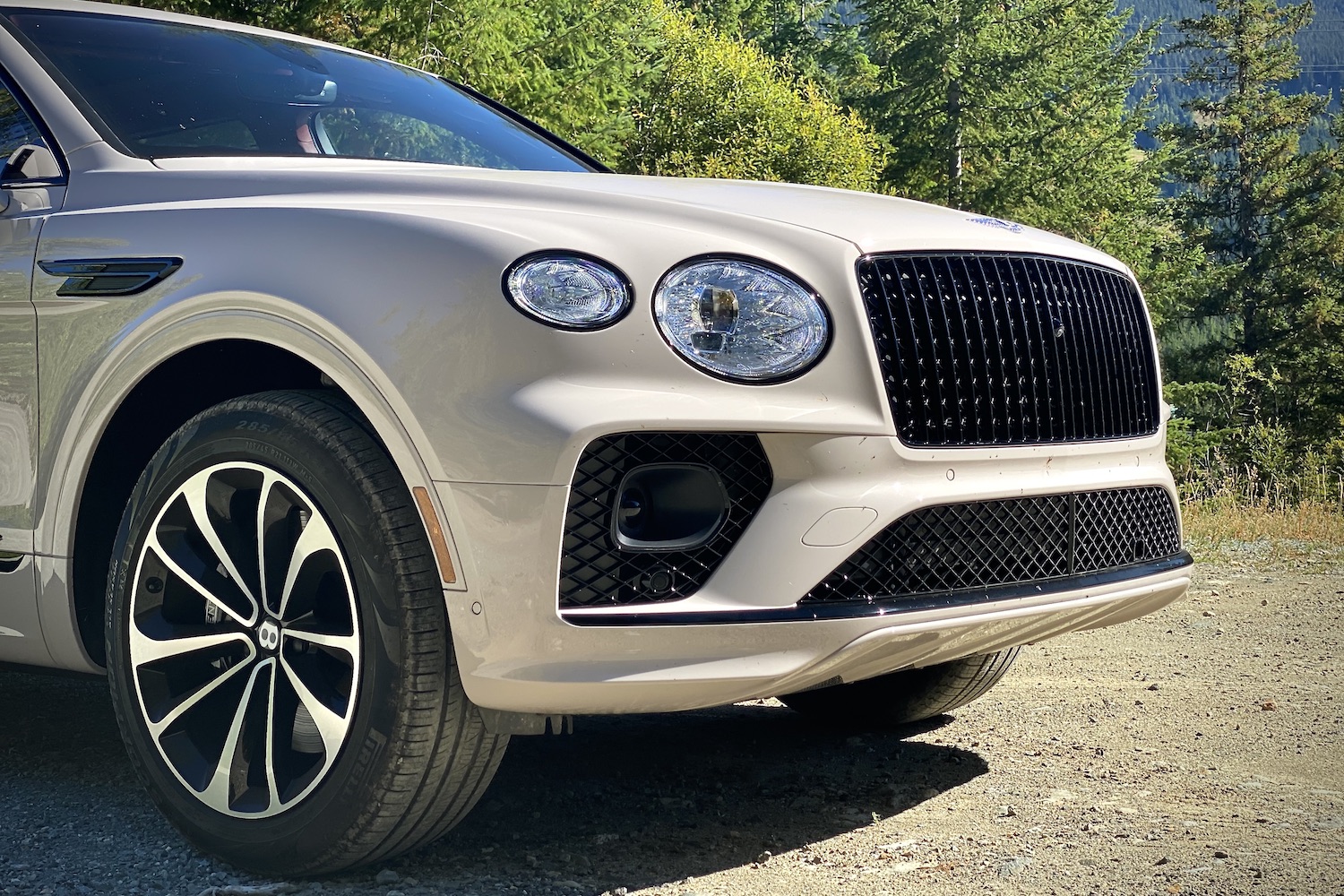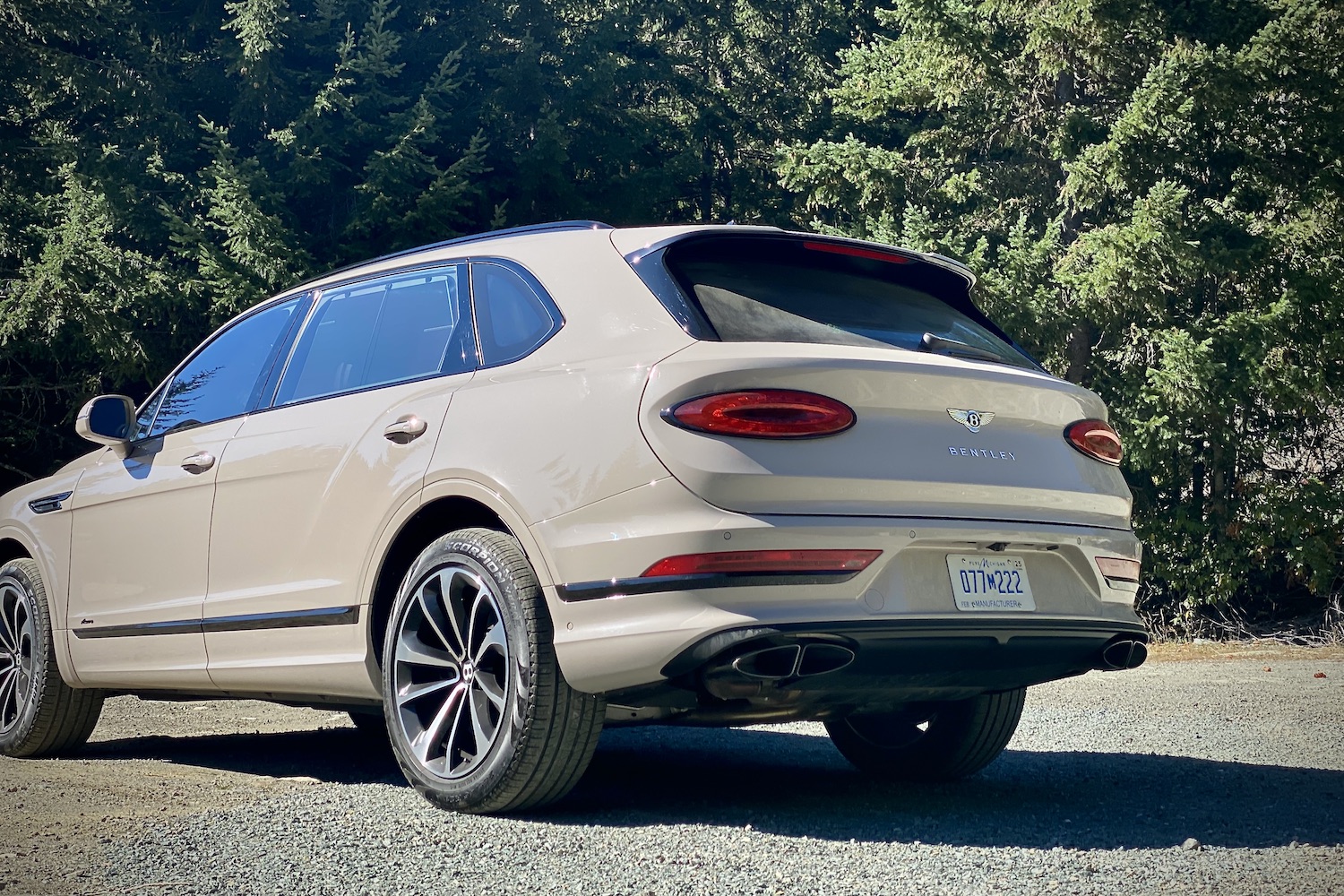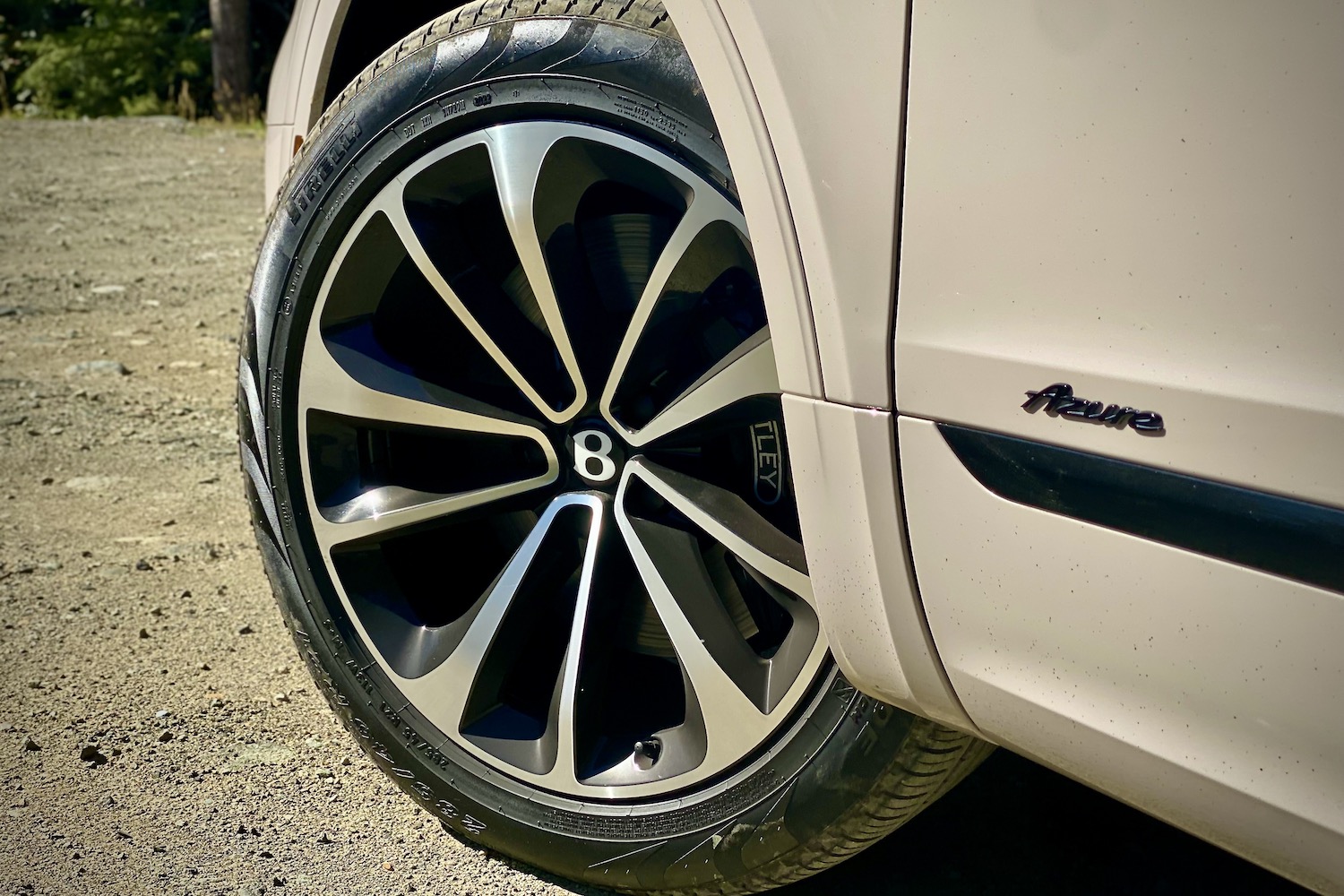Most automakers put a lot of time and effort into perfecting a car from the driver’s seat. That makes sense, since most people spend more time in the driver’s seat of a car instead of in one of the passenger’s seats. It’s why automakers give drivers access to massaging front seats with a dizzying number of power adjustments, while passengers in the back only get a few reclining positions and sliding adjustments. Happy driver, smooth ride.
If you find yourself with an opportunity to choose where you sit in the 2023 Bentley Bentayga Extended Wheelbase (EWB), we recommend the rear seat behind the front passenger. Look, we love driving as much as the next enthusiast, but the Bentayga EWB is all about the rear seat. Bentley only tacks the EWB moniker onto its longest and most opulent vehicles. Case in point, the last vehicle to get the EWB treatment was the Mulsanne, which was Bentley’s flagship model.

So, the new Bentayga EWB has an extra-large pair of 17 shoes to fill. For the ultra-wealthy, the Bentayga EWB requires extra money, but brings extra legroom, with the final result being an opulent SUV that’s all about pleasing its rear passengers.
Bentley Bentayga EWB exterior: Noticeably longer
The thing that makes the Bentayga EWB special over the regular Bentayga is its extended body. In a Victor Frankenstein method, Bentley took the Bentayga’s body and stretched it by 7.1 inches. It was a process that required significant work, including roughly 2,500 new parts, a new bespoke platform, and new facilities at its factory. The results are an SUV that measures 208.9 inches from end to end with a wheelbase that’s 125 inches long. All of the SUV’s extra length directly increases rear legroom, but more on that later.
Exterior design
While the Bentayga EWB has longer rear doors and a larger footprint than the Bentayga, the SUV still has the same conservative, yet stylish design. Squint closely at the rear half of the Bentayga EWB and you’ll notice the longer rear doors. It’s certainly not the prettiest of the modern Bentleys —that award might go to the Continental GT— as the bulbous design, rear haunches, and slim oval taillights result in an odd rear end, but the extra length mellows things out.
Customization galore
When you’re spending this kind of money on a vehicle, the last thing you want to end up with is something that’s straight from a cookie cutter. Bentley goes out of its way to ensure that no two Bentayga EWBs will be remotely similar to one another. The automaker claims that there are roughly 26 billion different Bentayga configurations to explore. Check out Bentley’s configurator for the vehicle and you’ll get the idea once a few hours have gone by.
Bentley Bentayga EWB’s interior: All about that seat
Surprise, surprise, the Bentayga EWB is a six-figure Bentley and it has an interior that fits neatly into the preconceived notion of what a six-figure Bentley should have. Yes, it’s nicer than your house on the inside. Yes, its interior puts 95% of vehicles to shame. Between the rich materials and beautiful color schemes, the Bentayga EWB does feel special, even when you consider its exorbitant price tag.
Material quality
With knurled controls, an available Diamond Illumination feature that shines light through hand-stitched leather panels, and a spectacular available 20-speaker Naim audio system, you can start to understand why people spend this kind of money on cars. You can tell how Bentley has agonized over every detail of the vehicle from the air vent controls. Instead of a traditional scroll wheel that’s made out of plastic, the Bentayga EWB’s air vents are controlled by a metal pull and pusher.
The magical Airline Seat
Large luxury SUVs are more popular than TikTok challenges, so a long-wheelbase Bentayga makes plenty of sense. If you have the kind of disposable money to be able to afford a Bentayga EWB, think of the available Airline Seat as a must. It’s the best seat that’s ever been placed into a car, probably, and helps you appreciate the scrumptiousness of the cabin.
The Airline Seat refers to the rear passenger seat that has 22 different adjustments – all power-adjustable, of course – and can recline up to 40 degrees in the deepest Relax setting. To give the rear passenger as much space as possible, the front passenger seat moves forward, deploying a footrest in the process. It’s a perfectly choreographed dance that results in absolute comfort.
Everything from the plush headrest to the side bolsters that give you a gentle hug can be adjusted with a switch at the base of the seat. If you’d prefer to use something a little more modern, there’s a small screen in the back that can be ejected out of its holder. Through the small device, passengers can adjust everything from their seating position and massage settings to choosing an individual speaker for the Naim audio system to blast music through.
Getting a massage while reclined is one thing, but the Airline Seat goes even further with its Auto Seat Climate system. The system goes above and beyond by constantly measuring the occupant’s temperature and surface humidity to automatically adjust the heating and cooling of the seat to ensure the passenger’s body remains at a set temperature. Could you do the same thing by constantly adjusting the heated and ventilated seats? Sure, but the way the system gets it absolutely right just makes you want to nuzzle deeper into the seat.
Between this system and the SUV’s deep massage feature, power-adjustable sunshades, an extra-large moonroof, and an Automatic Postural Adjustment feature that changes the shape of the seat to keep you comfortable on long drives, you’ll never want to leave. The Automatic Postural Adjustment feature provides the passenger with 177 adjustments over six pressure zones every three hours for maximum comfort. Owners can also customize how often the seat adjusts its shape and how severe the changes are for their own comfort.
Other seating arrangements
In addition to the four-passenger Airline Seat, Bentley will also sell the Bentayga EWB with a traditional rear bench seat with seating for up to five or a four-plus one configuration. The pinkish-gray vehicle with the red interior in the photos has the four-plus-one seating configuration. The rear bucket seats don’t offer nearly the same level of adjustment as the Airline Seat and aren’t nearly as comfortable, but for more practical-minded buyers that need to seat four plus a little kid that will be cramped in the middle rear seat, they’ll fit the bill.
The Volkswagen curse
Between the scrumptious materials and the I’ll-kill-you-over-who-gets-to-sit-in-the Airline Seat, the Bentayga EWB’s cabin only had one downside that I could find. The physical buttons for the HVAC and infotainment system have that similar click and feel to one of Audi’s high-end vehicles. Since Bentley owners aren’t the type of people to be cross-shopping at an Audi dealer, we doubt any owners will recognize the similarity. Plus dealing with the controls from the front seat is the chauffeur’s job. It’s one of those glass-shattering moments where once you hear it, you can’t ignore it.
Bentley Bentayga EWB driving experience: Surprisingly capable
There’s no denying that the Airline Seat is the best place to be in the Bentayga EWB. But on the off chance that your chauffeur takes the day off and you have to drive the SUV, you won’t be disappointed. Bentley didn’t take away any of the Bentayga’s athleticism and comfort to create the EWB. It rides incredibly well for a large SUV on the road and the introduction of rear-wheel steering will save you the embarrassment of pulling off a three-point turn.
Twin-turbo V8
The whole point of having such a nice backseat is to enjoy the ride, but that doesn’t mean the SUV won’t hit 100 mph at a rapid pace. Bentley is launching the Bentayga with the brand’s excellent twin-turbo 4.0-liter V8 engine. It produces 542 horsepower and 588 pound-feet of torque, which is enough to get the SUV to 60 mph in 4.5 seconds. That’s only 0.1 seconds off the regular Bentayga.
There are eight different drive modes that alter the way the Bentayga handles and performs with Sport bringing a hilarious snort on upshifts. The engine doesn’t sound particularly nice from the driver’s seat, though, as pushing it results in a strange humming sound. At this price, one would expect the engine to emit a gentle hum or play a peaceful song as it accelerates to triple figures, not buzz.
Yes, it can off-road
No one in their right mind will take a Bentayga off-road – unless you’ve really got money – yet that’s exactly what Bentley let us do. We went around some light trails surrounding the Whistler Olympic Park and the SUV did surprisingly well. It has a few off-road modes, hill descent control, and adjustable air suspension to be able to handle its own when the terrain gets rough, but it’s no G-Wagen.
W12 not in the cards
If you’re holding out for a W12-powered Bentayga EWB, you’ll be left hanging. Bentley doesn’t have any plans to offer the SUV with its 12-cylinder engine. Instead, it’s looking into helping the planet out by mulling over the possibility of a plug-in hybrid version. Nothing’s official yet, though.
Should you get one?
If you’re reading this, you probably can’t afford one. If you’re daydreaming about the possibility, then sure, you should totally buy one in your dreams. The EWB requires a premium of $30,900 over the regular Bentayga with pricing starting close to $227,000. The Azure models you see here start at roughly $266,000. With options, prices can eclipse $300,000 and that’s before you meet up with Mulliner.
Bentley believes that the Bentayga EWB will be the most popular version of the SUV with the Airline Seat being an in-demand feature. It’s easy to see why. The extra legroom and drool-worthy seat that costs over $11,000 give the Bentayga some qualities rivals can’t match. This is how Bentley should’ve launched the SUV in 2015.

